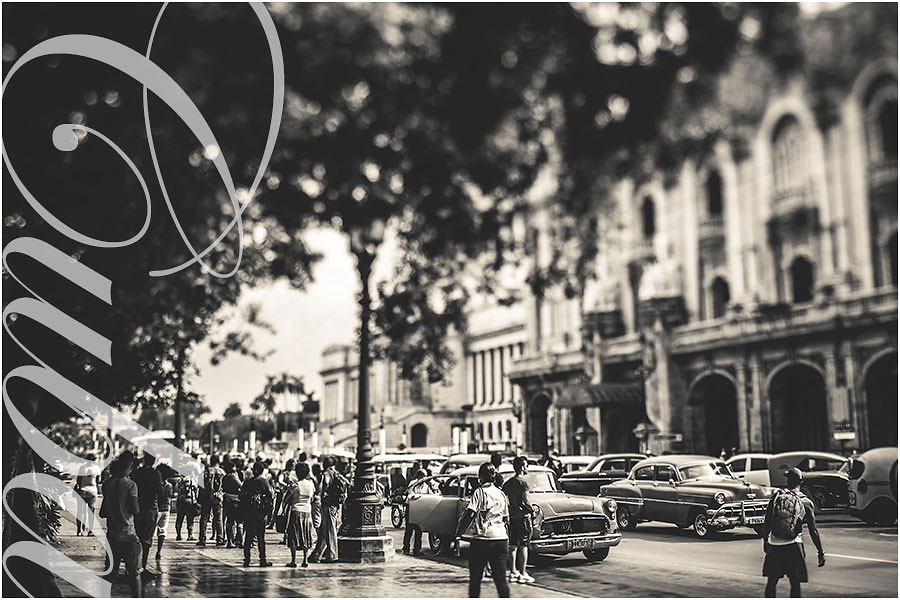
Bizarrely for a wedding photographer, we found a two week window for a holiday in June and went to Cuba!
It’s a place I’ve wanted to visit for YEARS; ever since discovering Cuban music through Wim Wenders’ brilliant 1999 documentary The Buena Vista Social Club, about American guitarist (Ry Cooder) going to Cuba to reunite & record a group of ageing traditional musicians, and their subsequent international success. As a music-obsessed teenager, branching away from the insular moaning of indie & grunge, this Latin music was like bathing in Caribbean sunshine, yet set against a mysterious shadow of otherworldly Communism and a way of life different to my own. Then as I began to travel extensively and expand my horizons, I ached to visit the crumbling timewarp of Havana; to see ancient American cars chug past while I enjoyed a Mojito. As my passion for travel developed, so did my desire to seal what I saw with photography, which is many ways is why I do what I do today.
Bizarrely, in spite of Havana clearly seeming to be a photographer’s paradise, somehow Cuba’s evaded my adventures; until now…
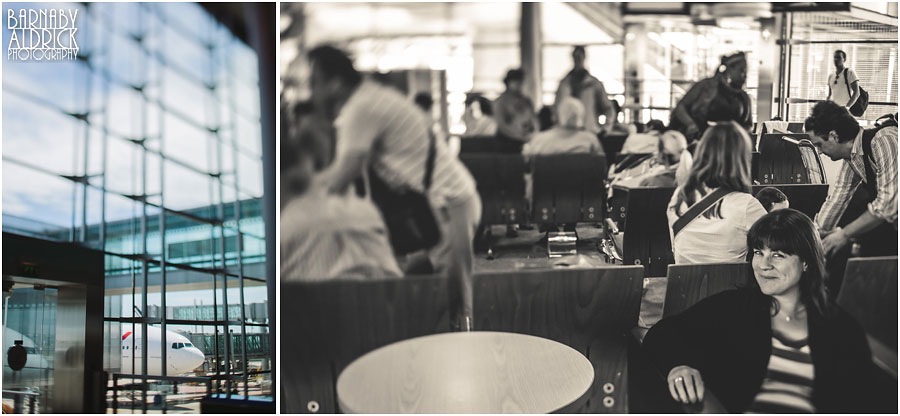
I’ve seen various friends visit Cuba, often seeking very different kinds of holidays. Some come back disappointed and others with their mind blown. I think the experience depends what people were hoping to see and where they’re coming from. Some go there for all-inclusive, package holidays and hardly leave their resort, finding places like Havana dirty and challenging. There were definitely obstacles to a relaxing holiday; English isn’t widely spoken (though wider than I imagined), there aren’t many shops & it’s hard to find ‘authentic’ bars not packed with tourists ordering the drink Hemmingway invented. There’s a dual currency (one for tourists – Convertible Pesos – and one for locals – Pesos, and little room for negotiation between them, which any seasoned ‘traveller’ would resent) and tourists are often mollycoddled into being shepherded around ‘safe’ areas, thereby struggling to get off the beaten track.
So when we set out, we had our eyes open and expectations tempered…
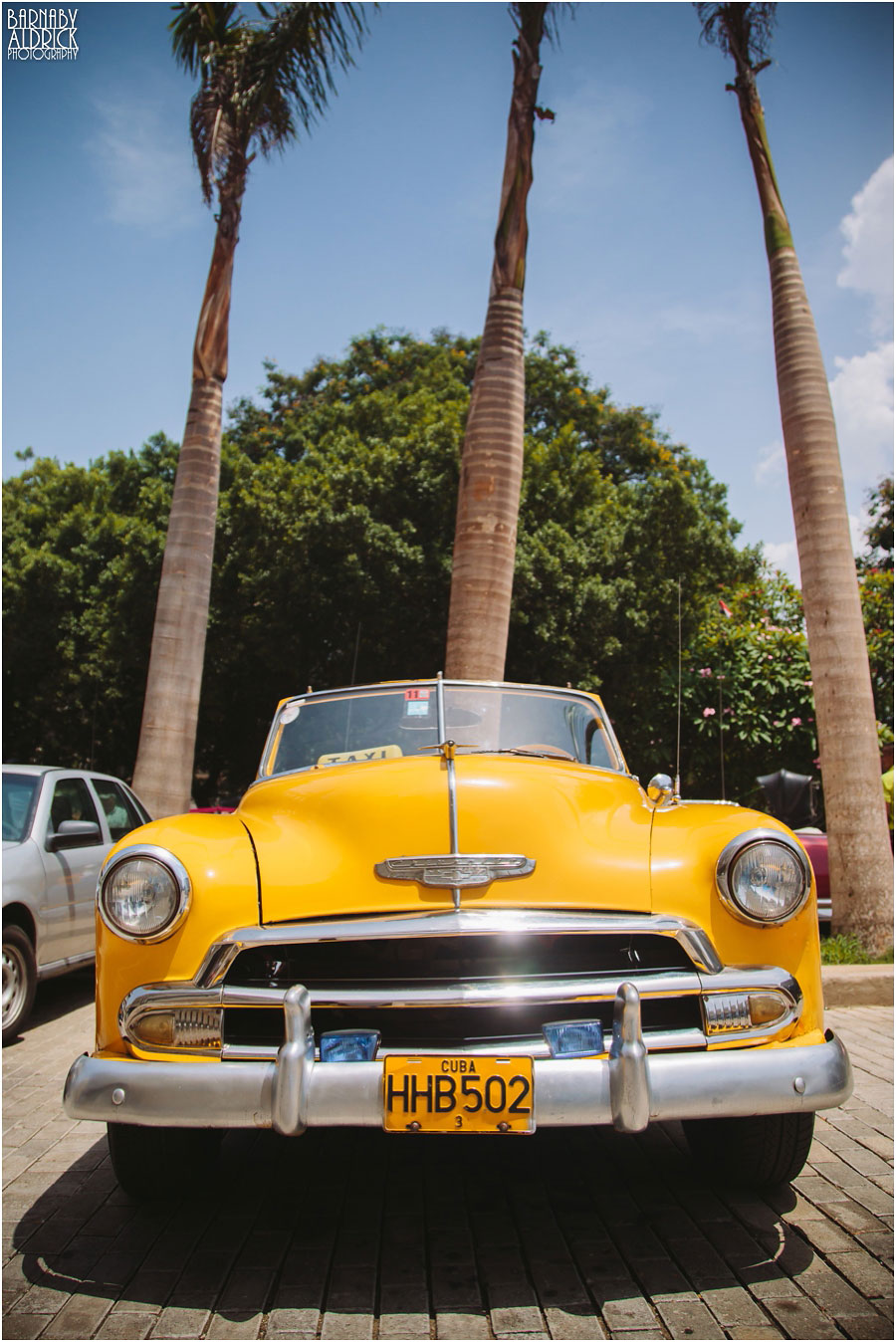
But I wasn’t disappointed.
Just as I’d dreamt; ancient, beautiful, wheezing American Chevvy’s, Pontiacs & Dodges were literally everywhere! Not just here and there, everywhere.
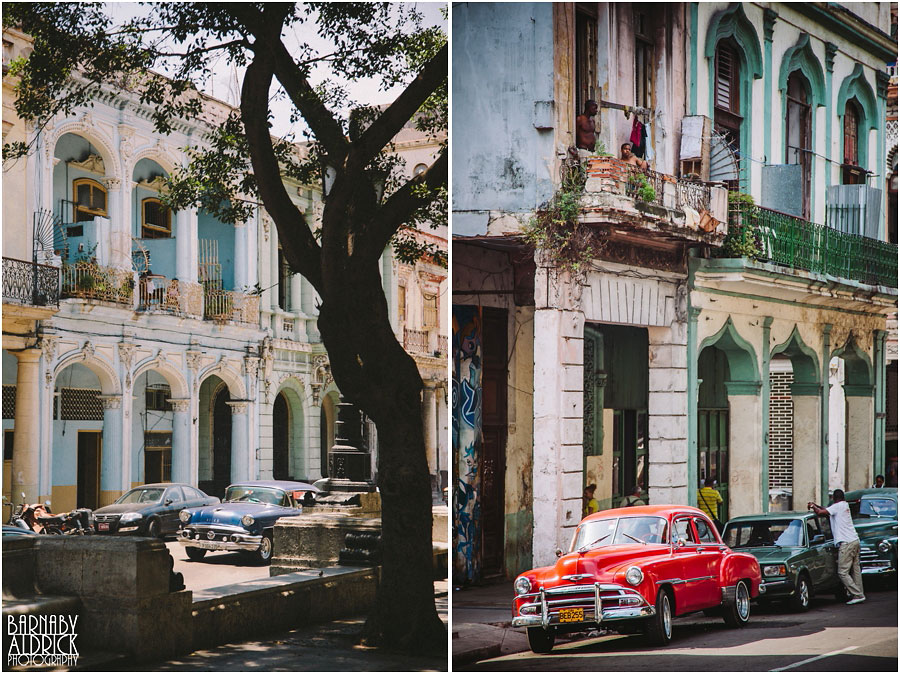
About 70% of cars were Yank Tanks, with 10% modern cars & the rest Ladas, Moskvitchs and Volgas from the years of Soviet Union influence on Cuba regime.
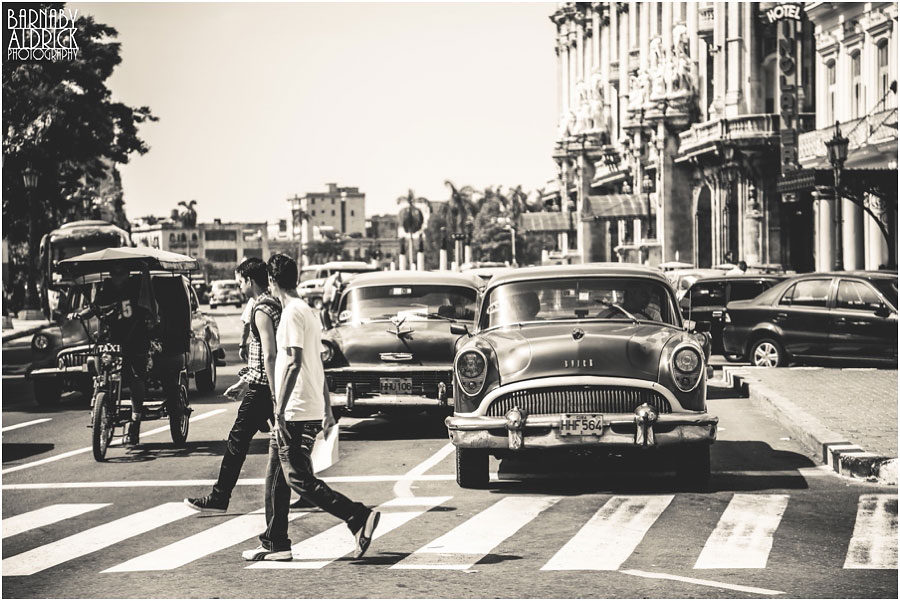
Due to the constant good care, many remain in fine working order because Cuban people have been able to adapt to a diminishing source of parts. The Cuban owners of these beasts will be sat on a potential “gold mine” if the embargo is lifted, by selling their cars to people who collect and restore them.
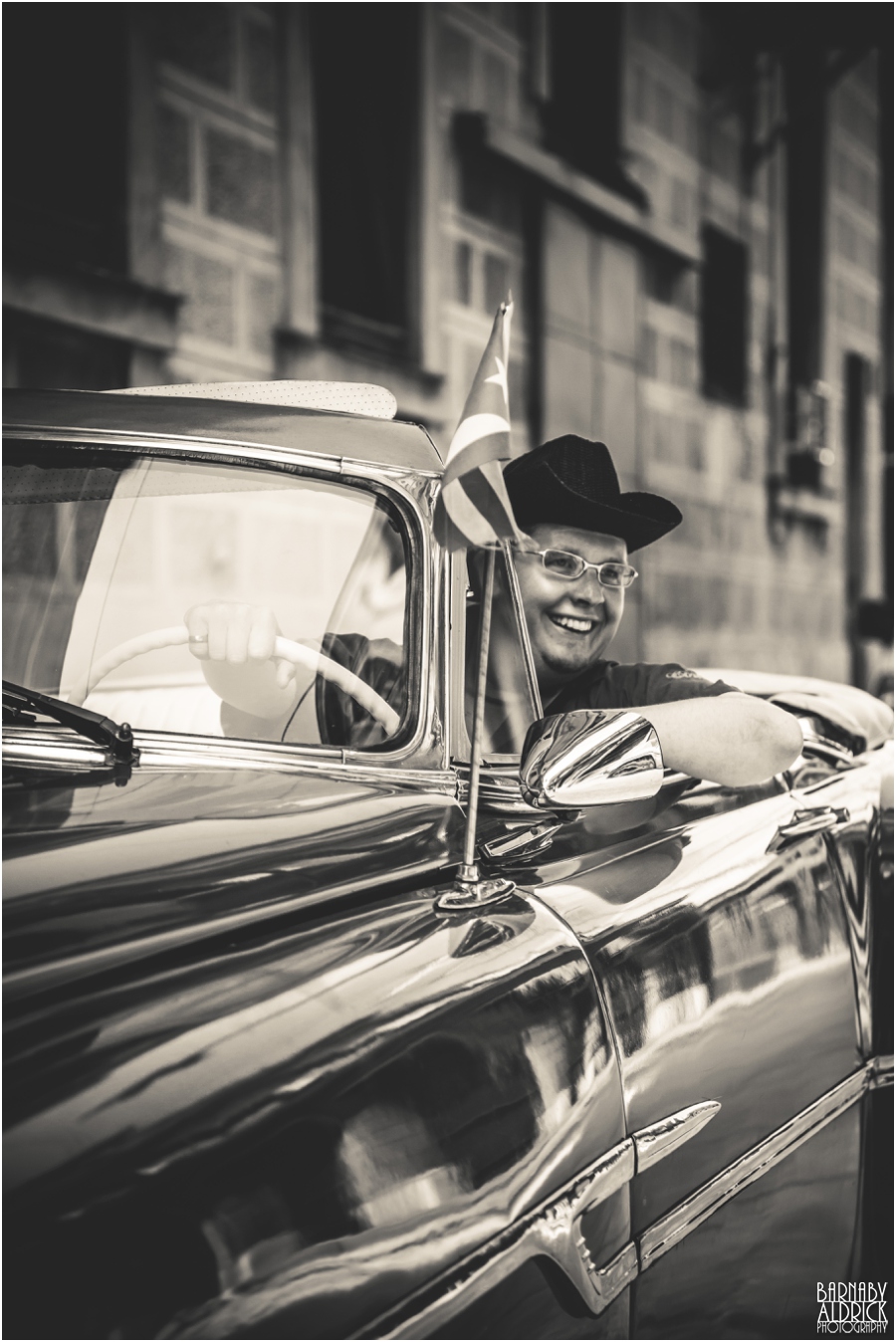
I can certainly see myself rollin’ in one of these old smokers!
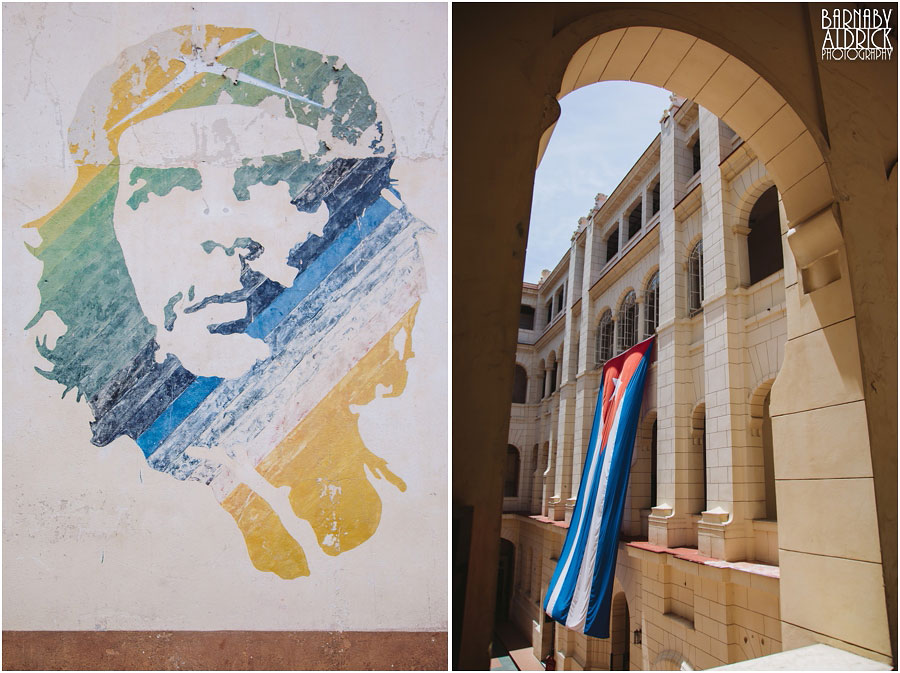
One of the most interesting things about Cuba is its politics. As I’m into my movies, in preparation, I watched The Motorcycle Diaries, Che part 1 & 2, Commandante & Soy Cuba, to get a feeling for how and why these guys rose up and claimed back what had essentially become a corrupt, mafia-riddled, American annex.
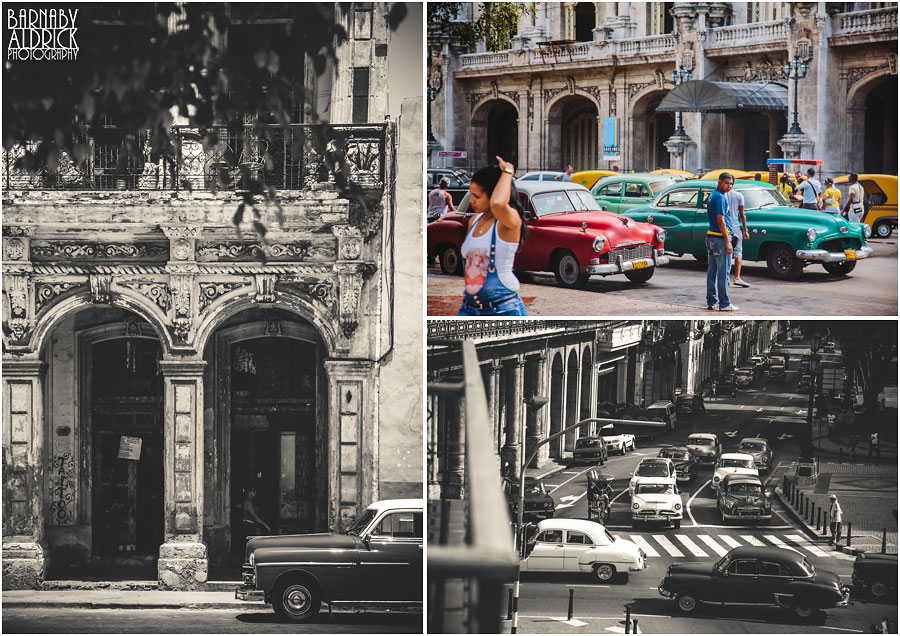
The interesting thing in being there was trying to see, through my ‘imperialist’ eyes, how this machine actually functions. The people there have so little, can almost never afford to travel outside Cuba, are rationed and have such limited resources (there’s no variety in anything, no different brands of shampoo, just one state shampoo etc); yet on the flipside, all are employed (even if it takes 3 people to do one job) and salaried (though generally around $25/month whatever you do), have access to educate themselves as far as they desire, have free healthcare and no rent. I learned that after the revolution, all the apartments were taken from their owners and simply given to the people. While this means no rent, it also means no maintenance, which is why there’s a beautiful crumbling decadence to every facade.
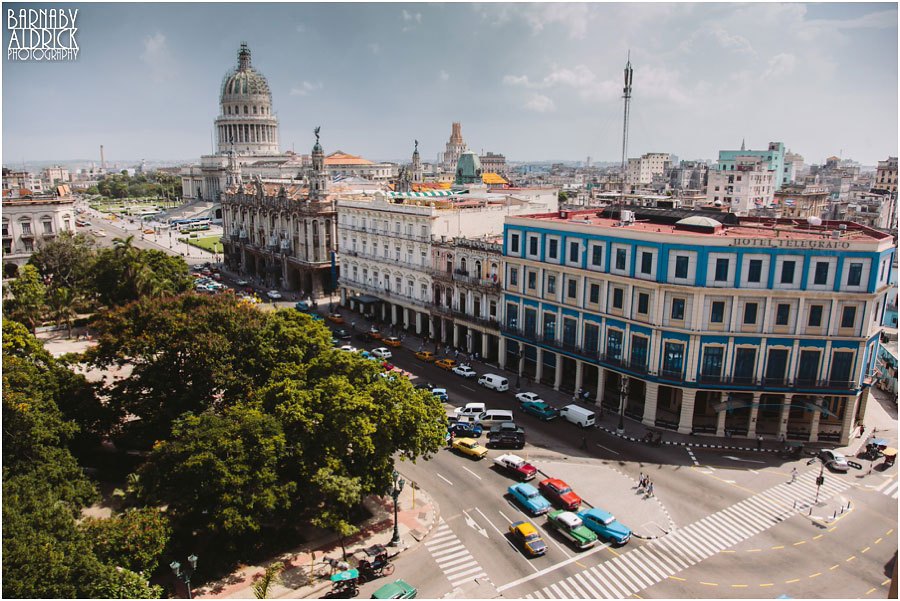
We stayed at the Hotel Telegrafo – once the first hotel to have a telephone in Cuba – overlooking Parque Central & many famous sights (such as The Capitol building)
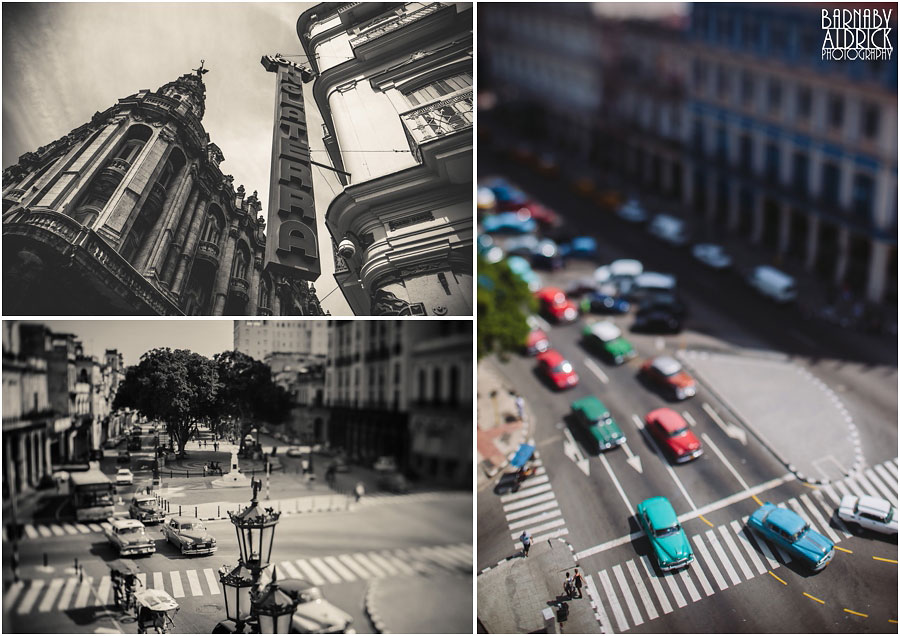
I could sit on the balcony with a bottle of Havana 7 and watch the cars all day long!
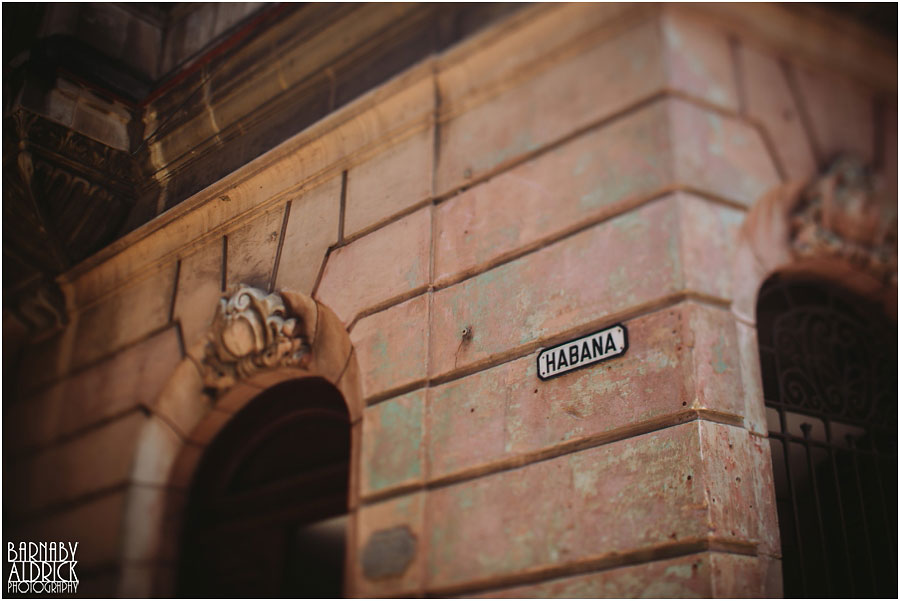
When you take the long drive from the airport, you pass through ‘New Habana’ and into ‘Old Habana’. Ironically, it’s not that easy to tell the difference, but the old town is exactly what I expected and hoped it to look like… And it’s genuinely a photographer’s paradise.
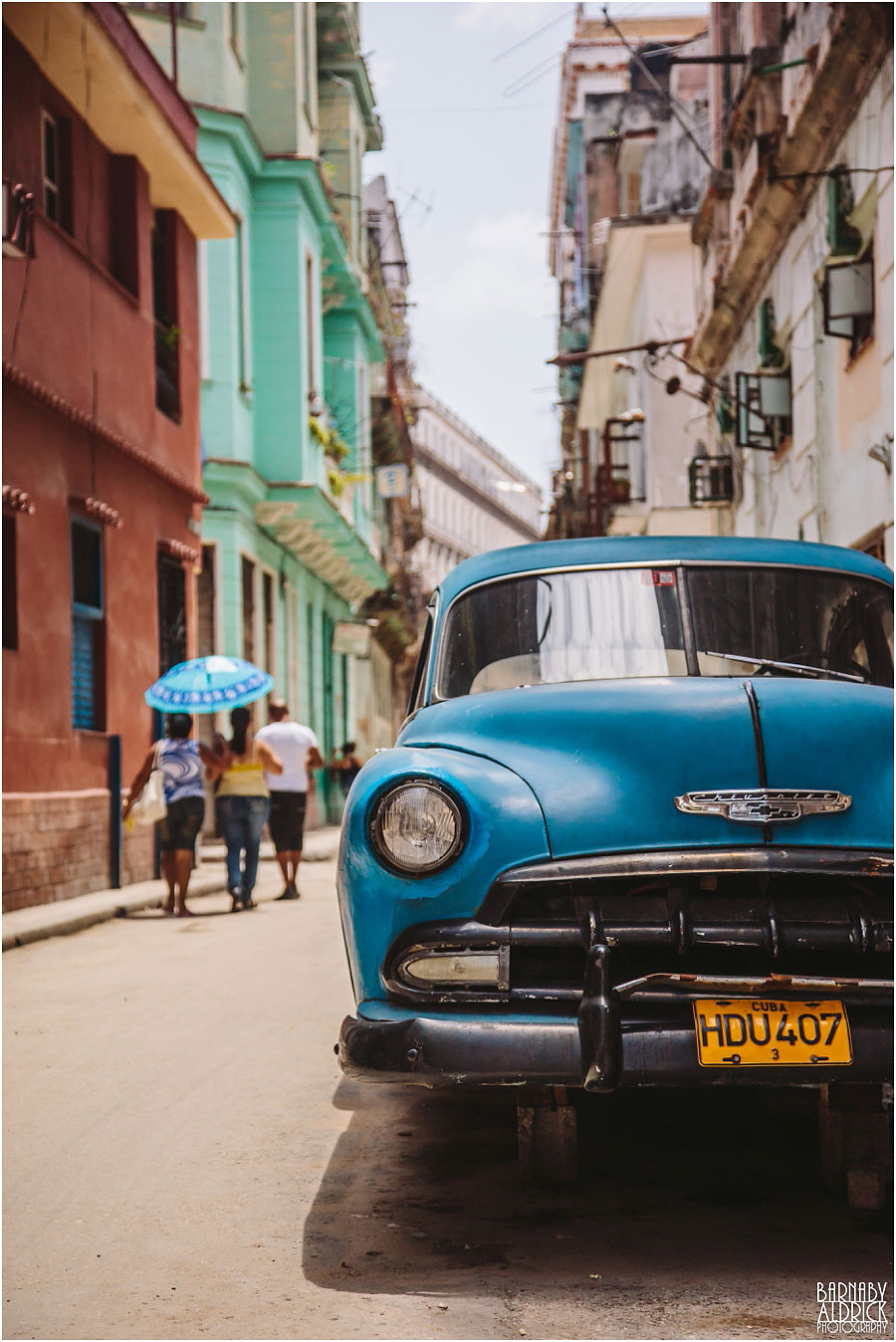
Cars up on bricks in West Leeds don’t have quite the same chic as in Cuba.
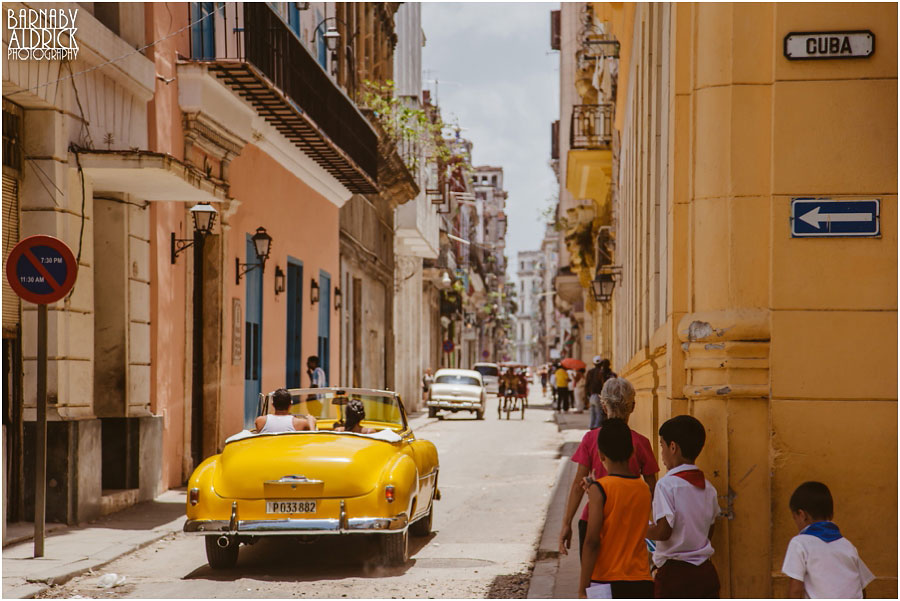
This is one of my favourite pics of the trip. It’s got everything in it, in the right place; the cars, rickshaws, colours & locals. It will forever remind me of the place.
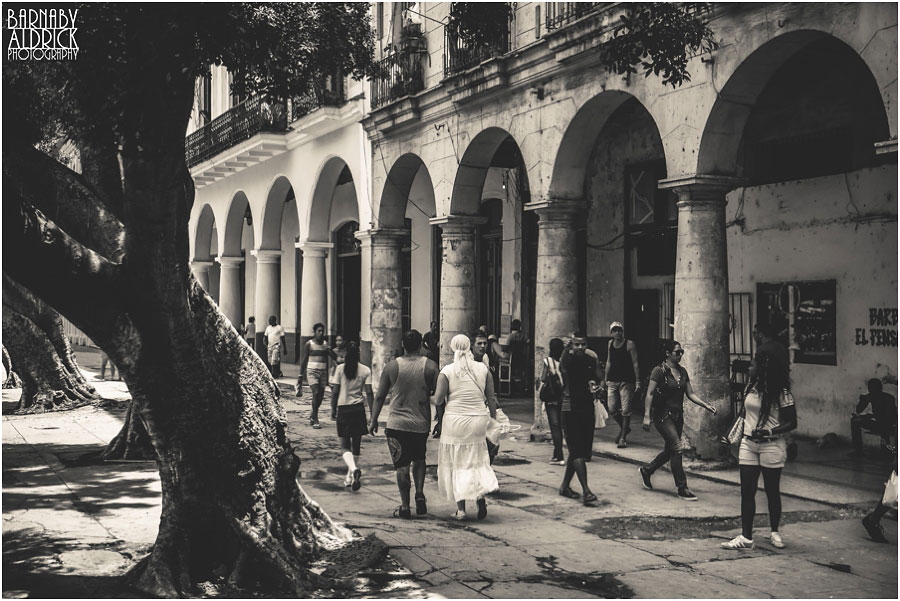
I rather like this tourist-less street scene
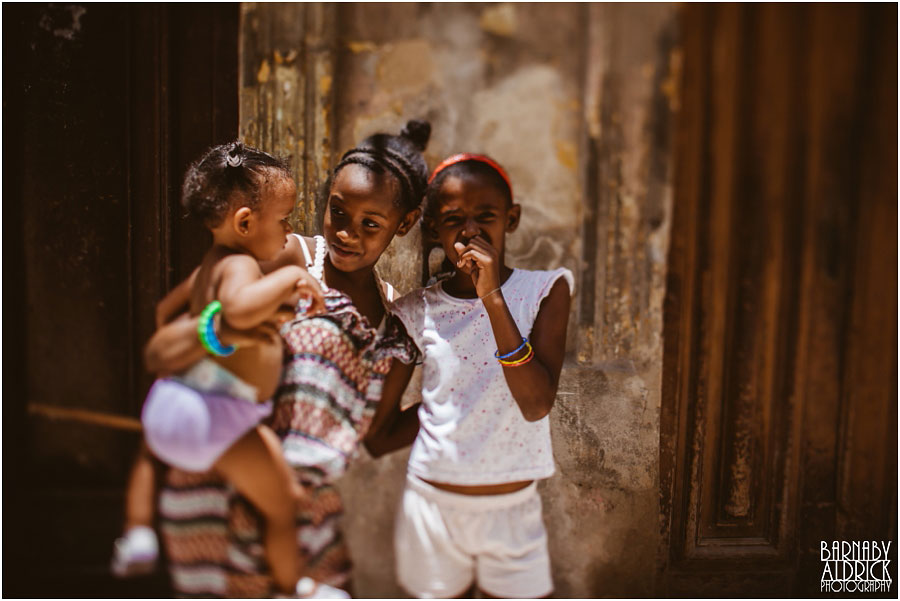
People generally seemed cool with you taking their photo too, which was refreshing. Many accepted, some played up, some said no. I can fully understand when people aren’t keen and I respect that, as tourists buzzing up with their unimaginably expensive cameras could easily make the subject feel like their an animal in a zoo.
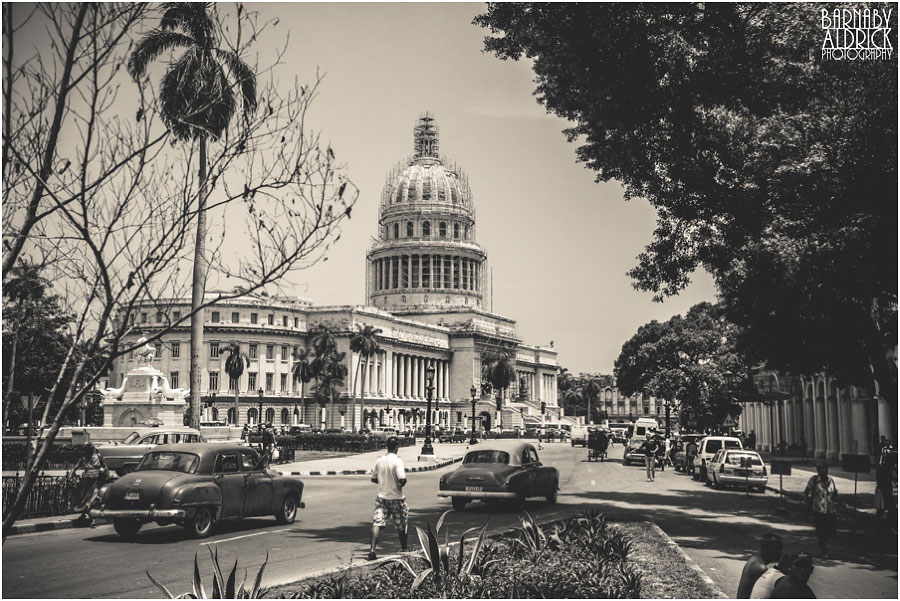
They say the Cuban Revolution was like pushing a huge timewarp button.
A lot of the former government buildings have become museums and are often undergoing slooooow refubishment.
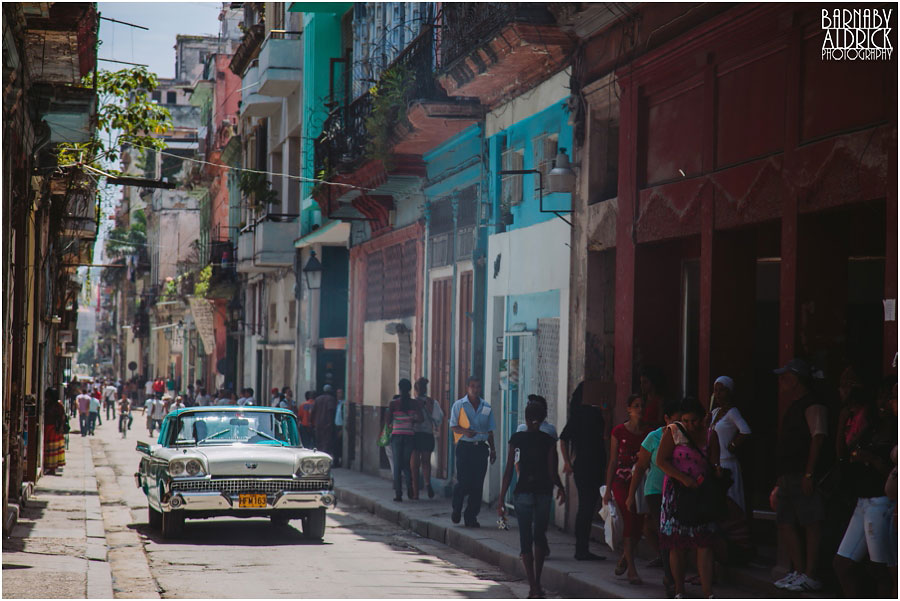
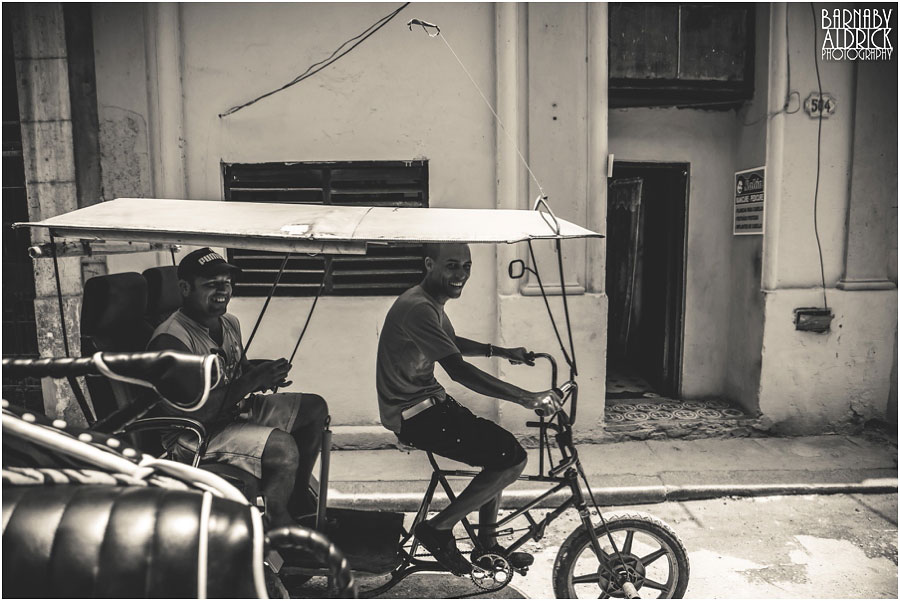
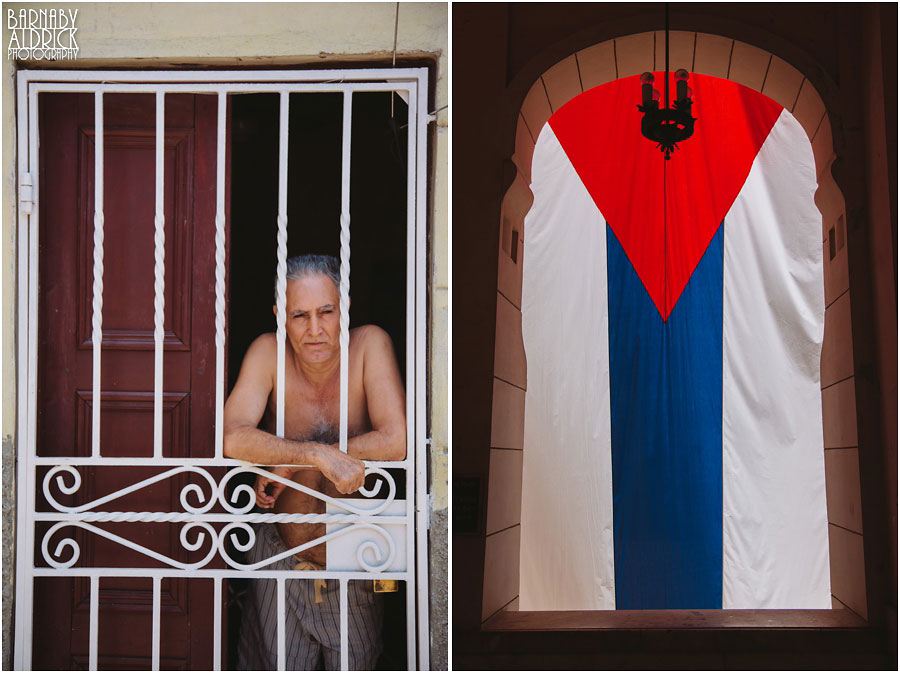
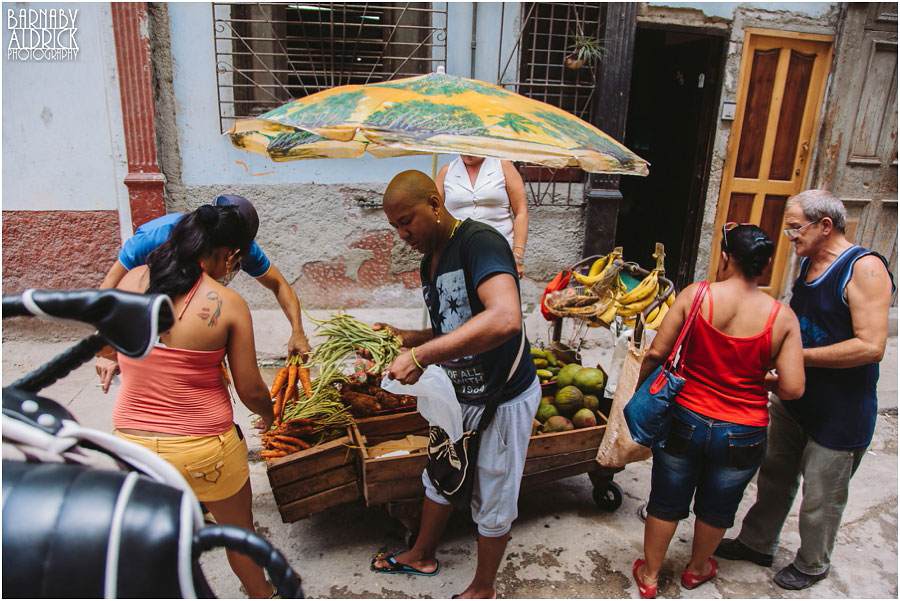
Ever since I started travelling I’ve loved visiting cultures that live it out on the street. They’re generally hot places, and it’s fascinating to see people doing their day-to-days.
In England, everything is behind closed doors, and being outside is generally to be heading for shelter within another closed door.
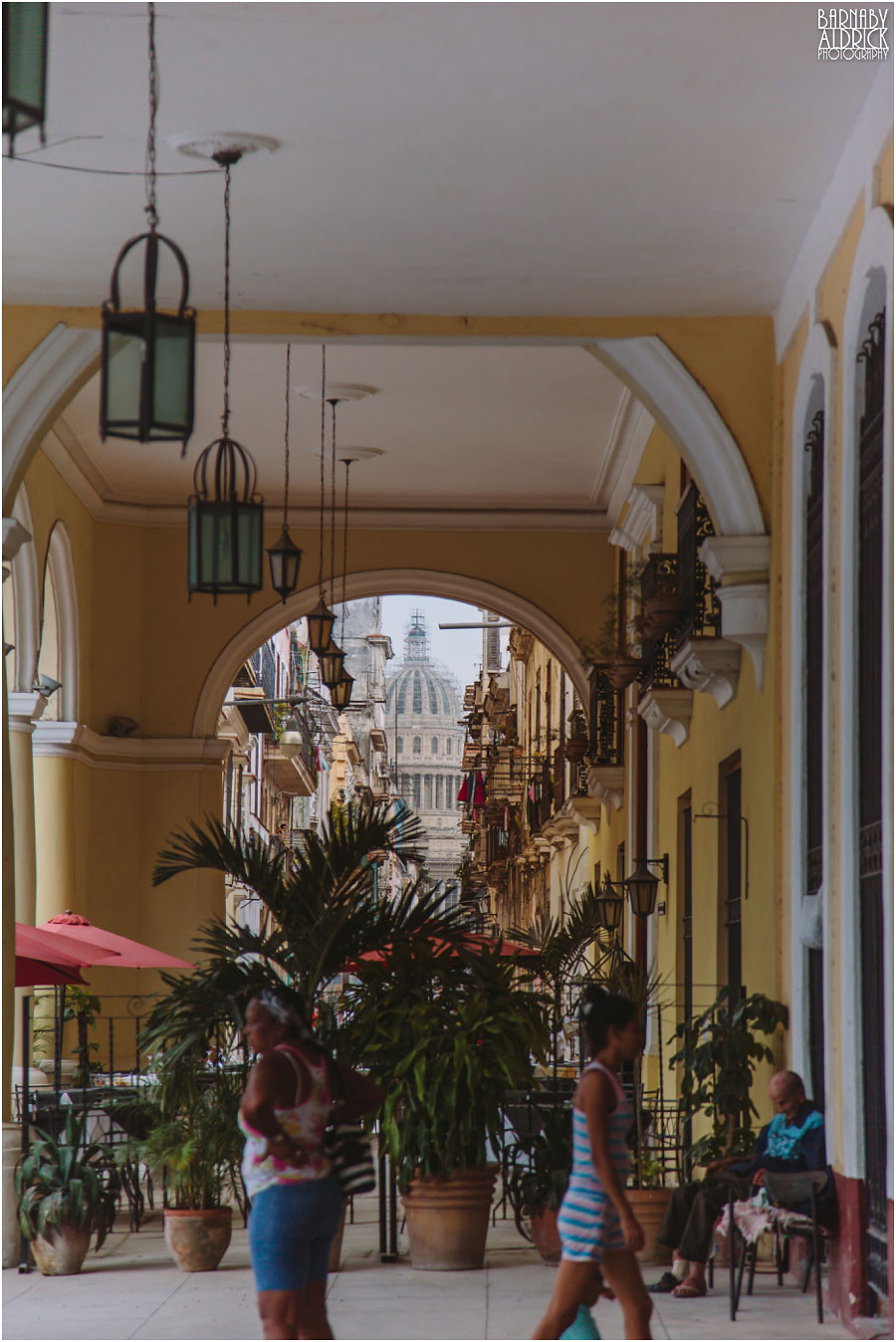
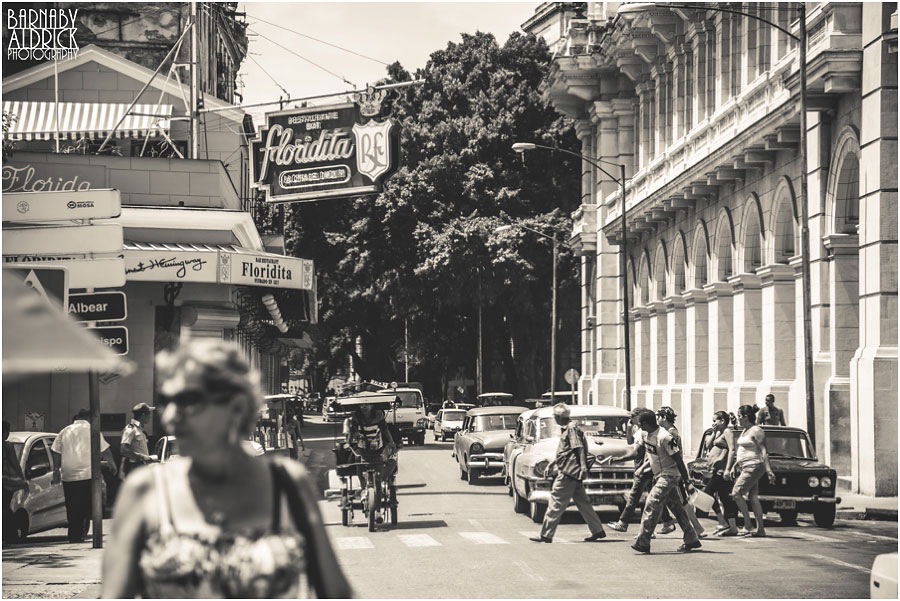
It was wrong not to pop into Hemmingway’s favourite bar, Floridita, for one of Papa’s Daiquiris.
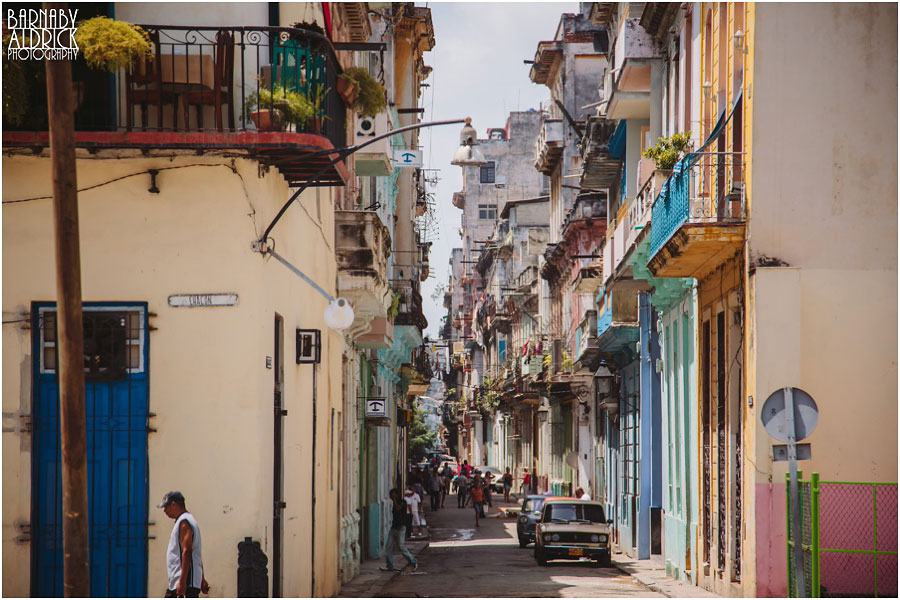
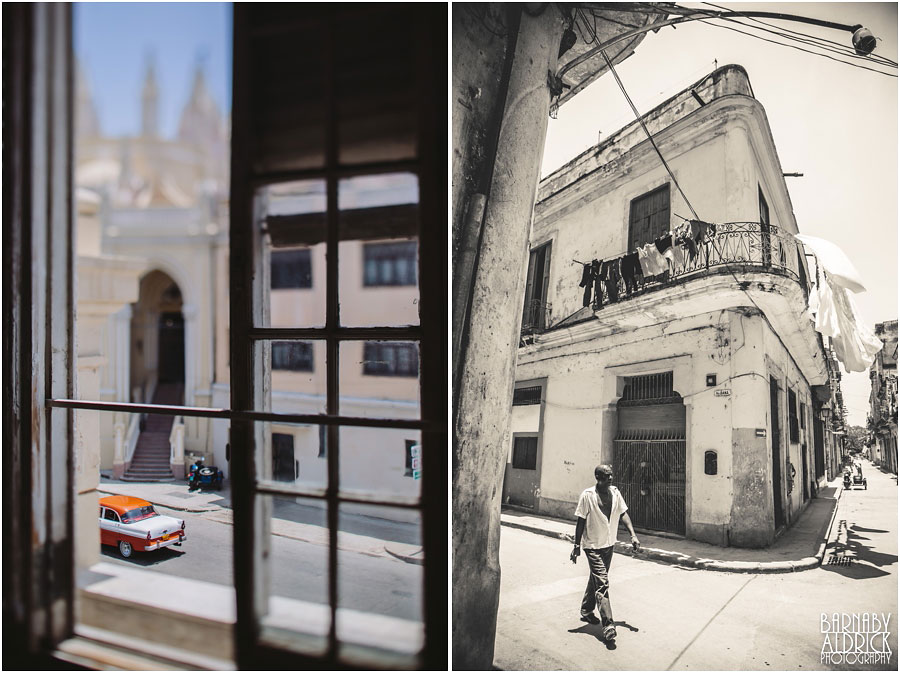
I could have literally wandered the old town for a lifetime. It’s street photography heaven…
…which is why Clare had cunningly arranged for nearly a week of this trip to be on a resort out on the islands, rather than wandering these beautiful streets!
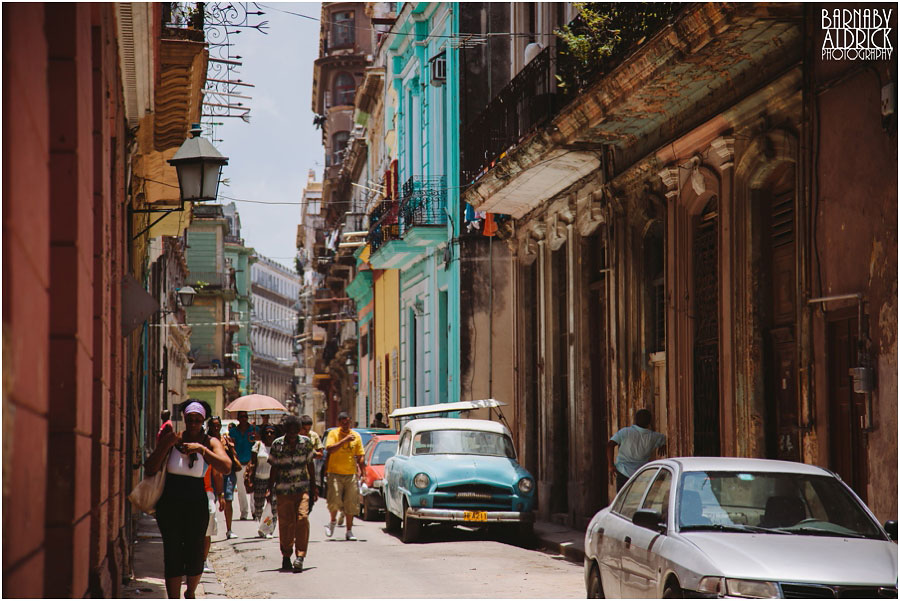
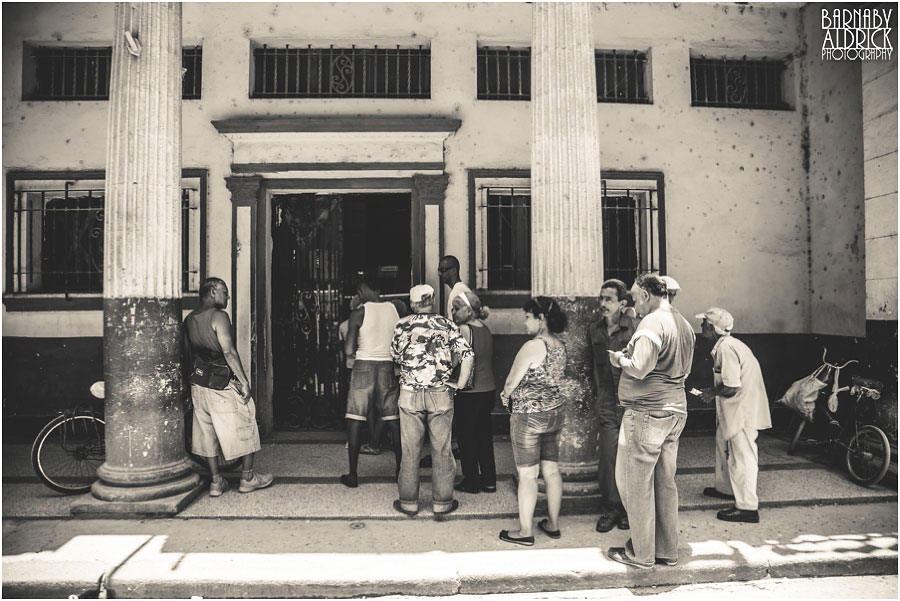
Queuing up for rations
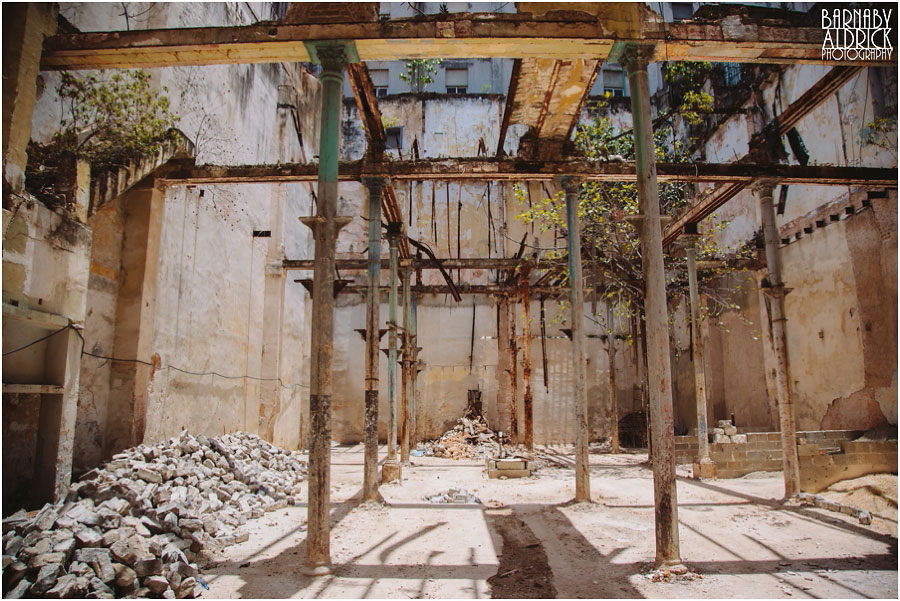
A “fixer upper” if I ever saw one…
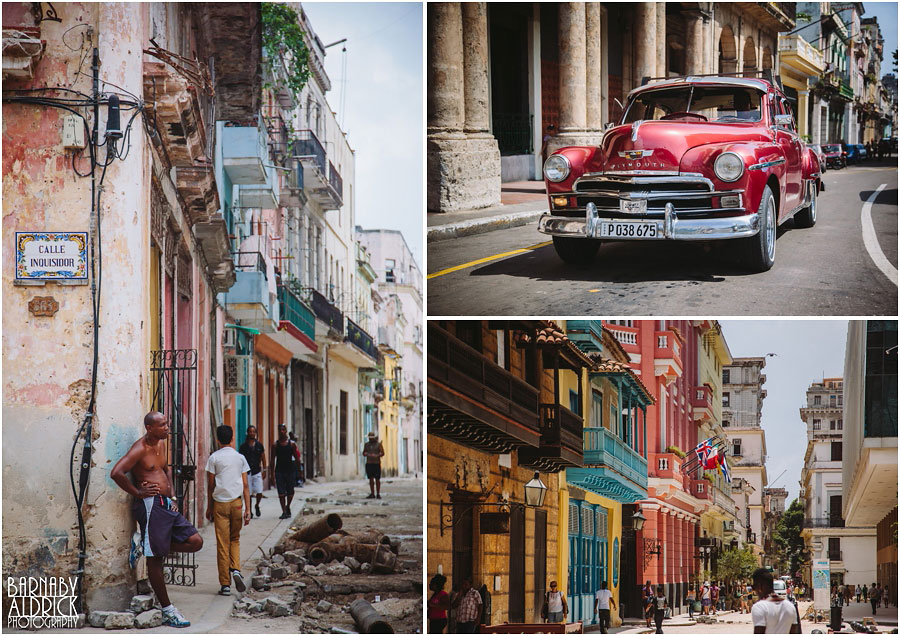
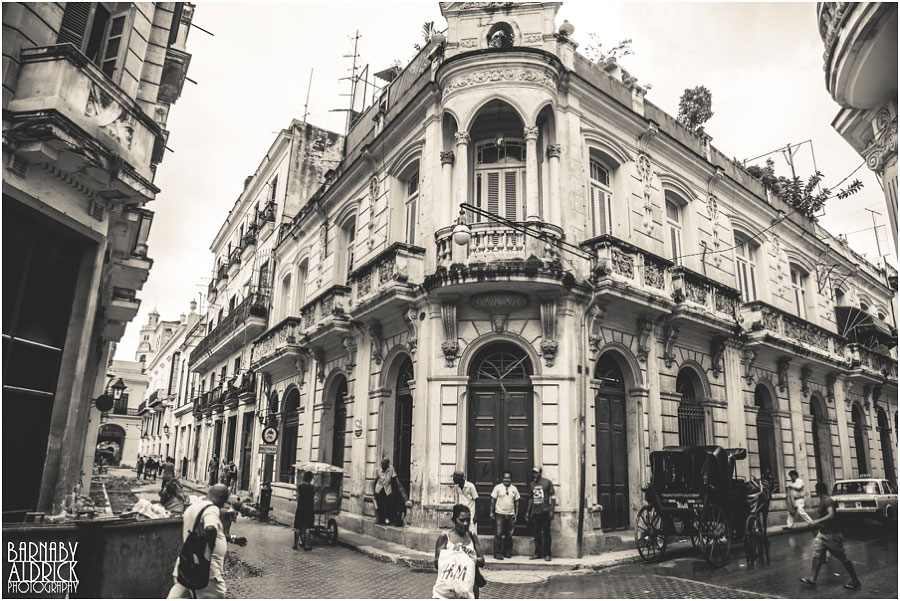
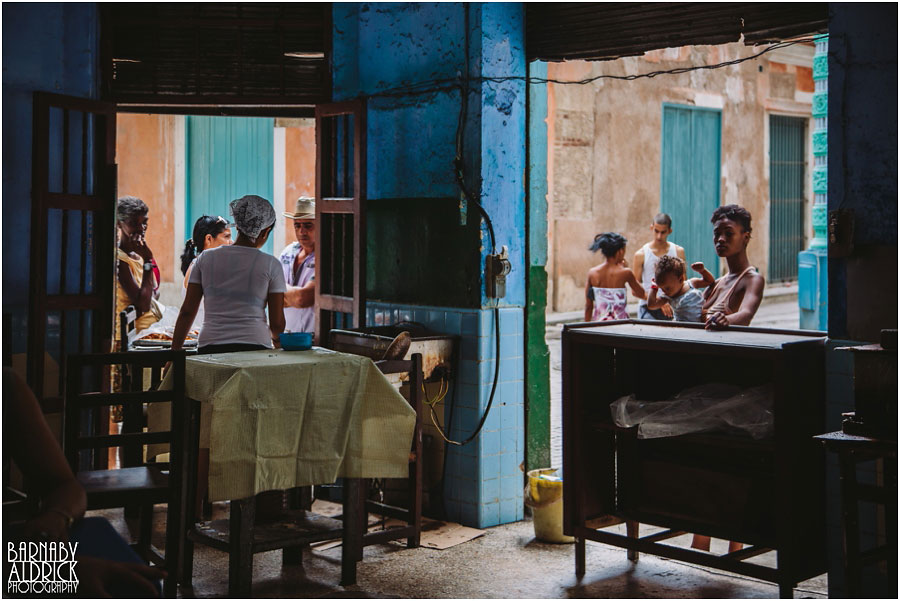
Just before the heavens opened one day, we ducked into probably the most authentic Cuban bar we’d found all trip.
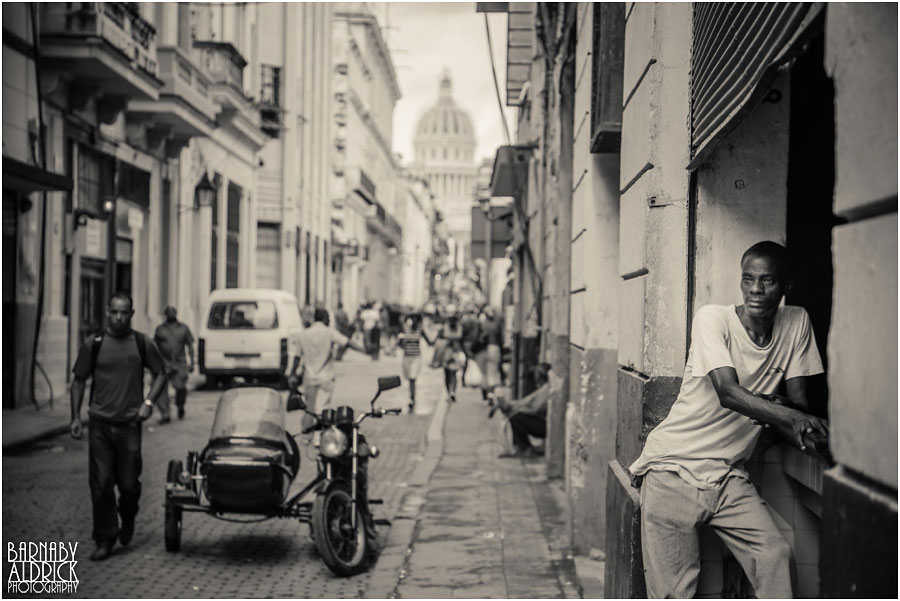
Just before the heavens opened, I caught this dude chilling outside and he seemed happy for me to photograph him
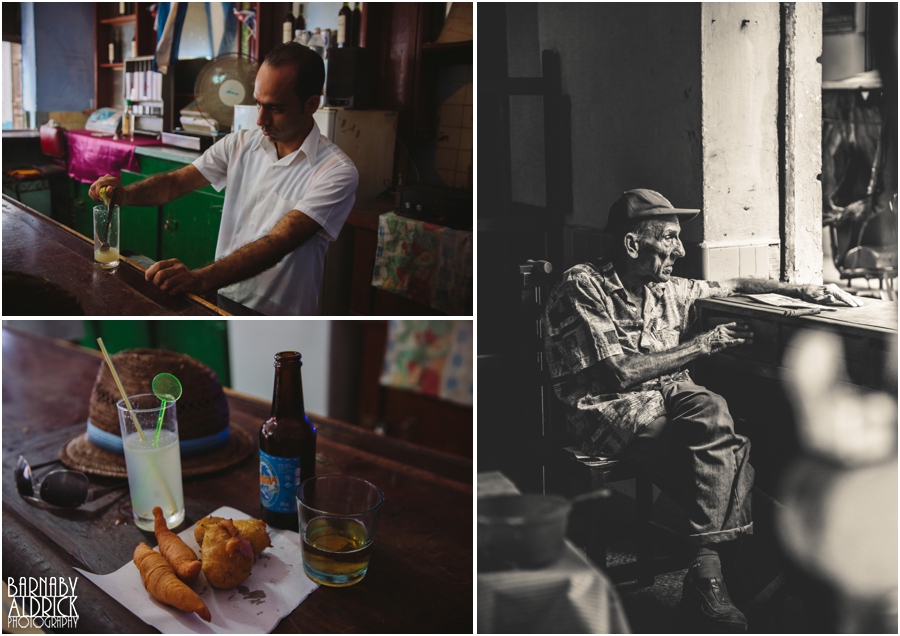
While we killed time over a beer, a lemonade & some of the snacks they were making in the bar doorway, this leathery old fellow caught my eye, watching the weather turn.
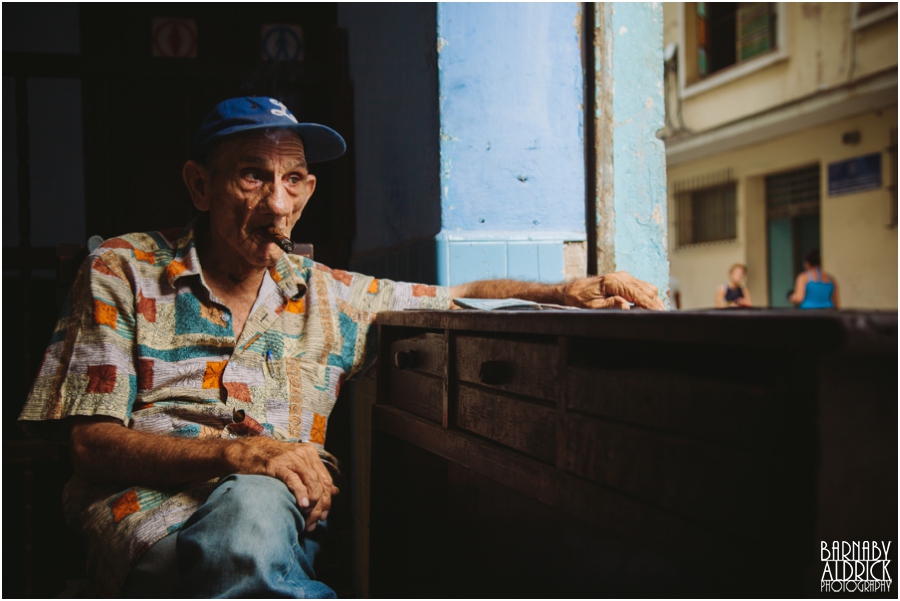
He was also happy for me to take his portrait, chewing on a fat Cohiba.
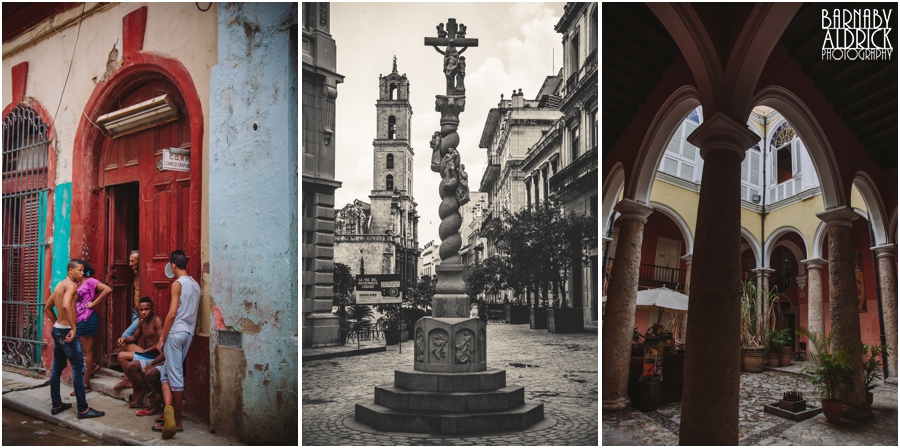
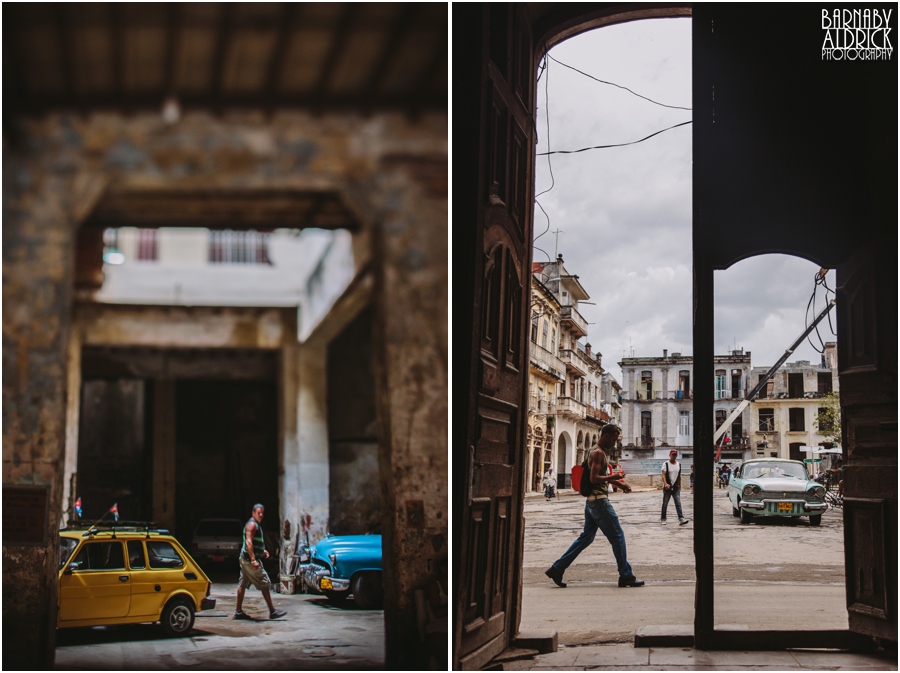
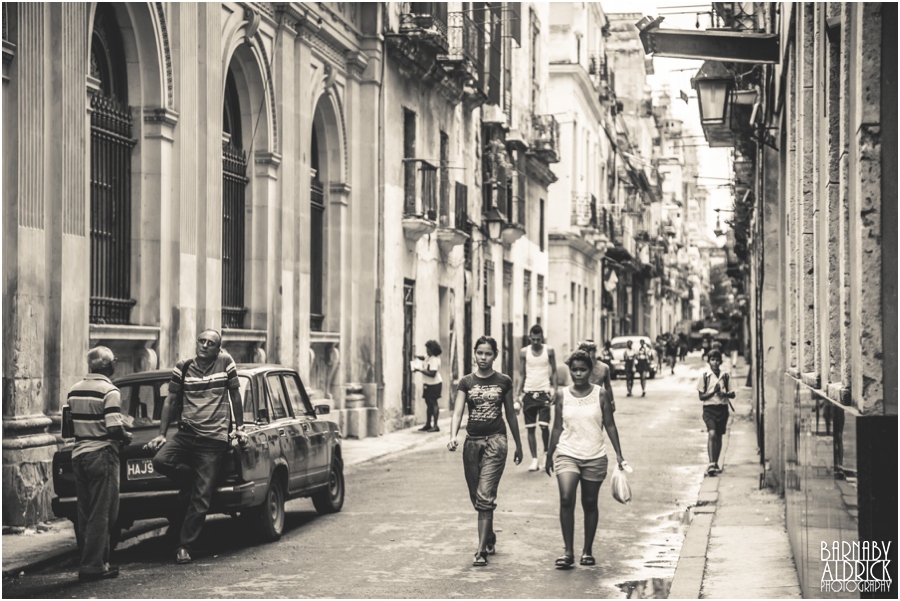
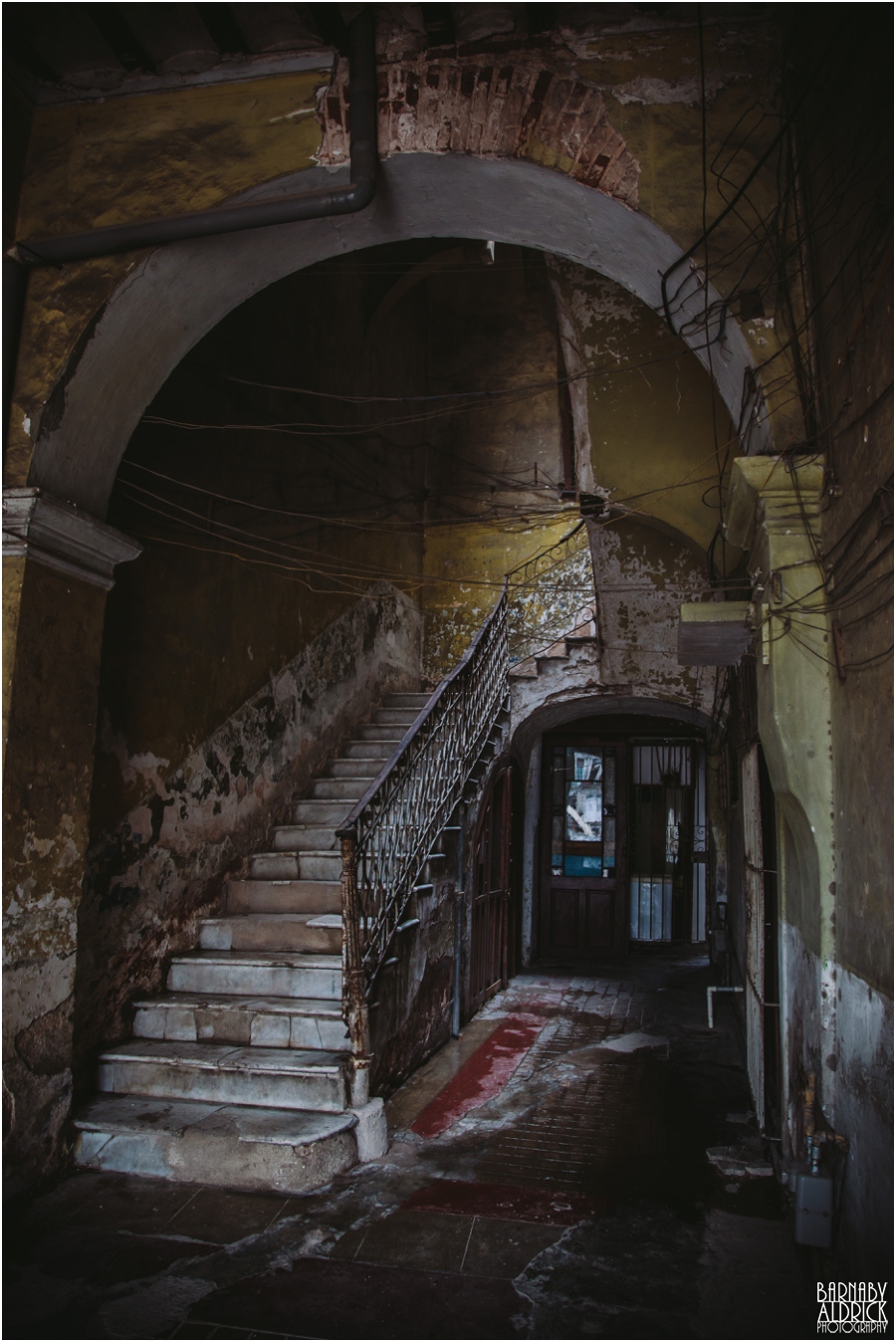
Another sight I was hoping to root out was a dilapidated stairwell. Turns out pretty much every time you see an open arch in a building you can find one like this.
Ace eh? It’s like something out of a post apocalyptic 28 days later.
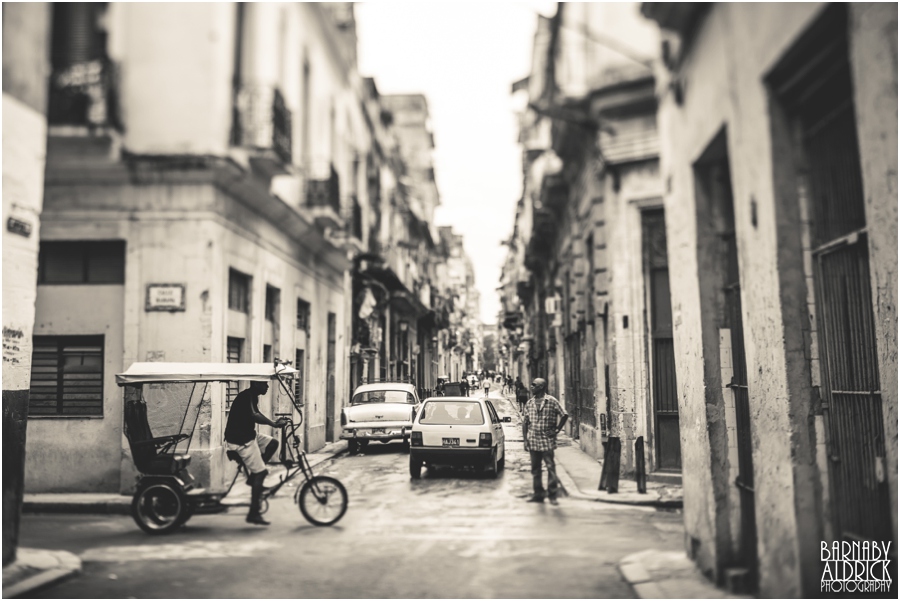
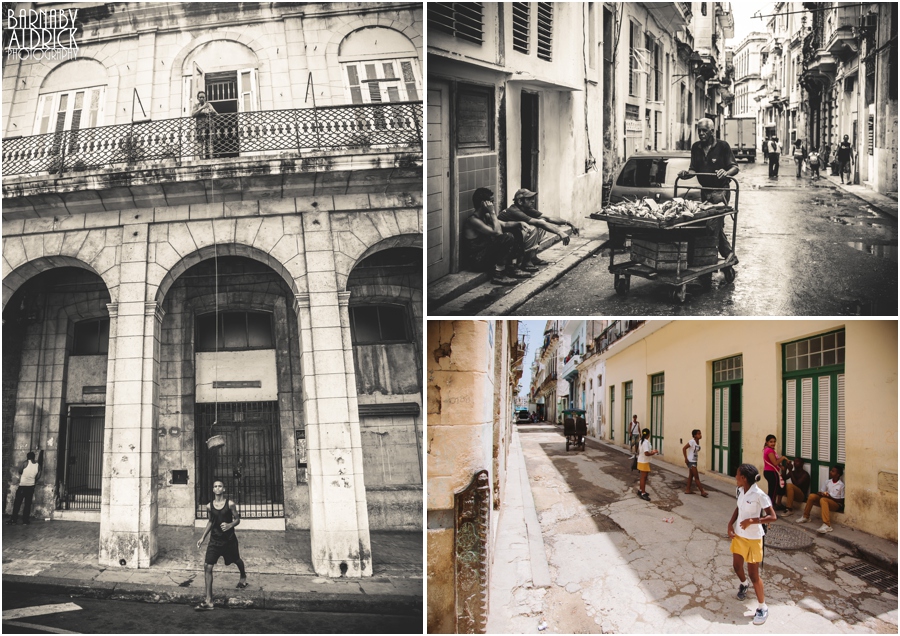
Everywhere you looked, people were up to something. It’s not the grey picture of stoic Communism painted by USSR, or overlord control in China.
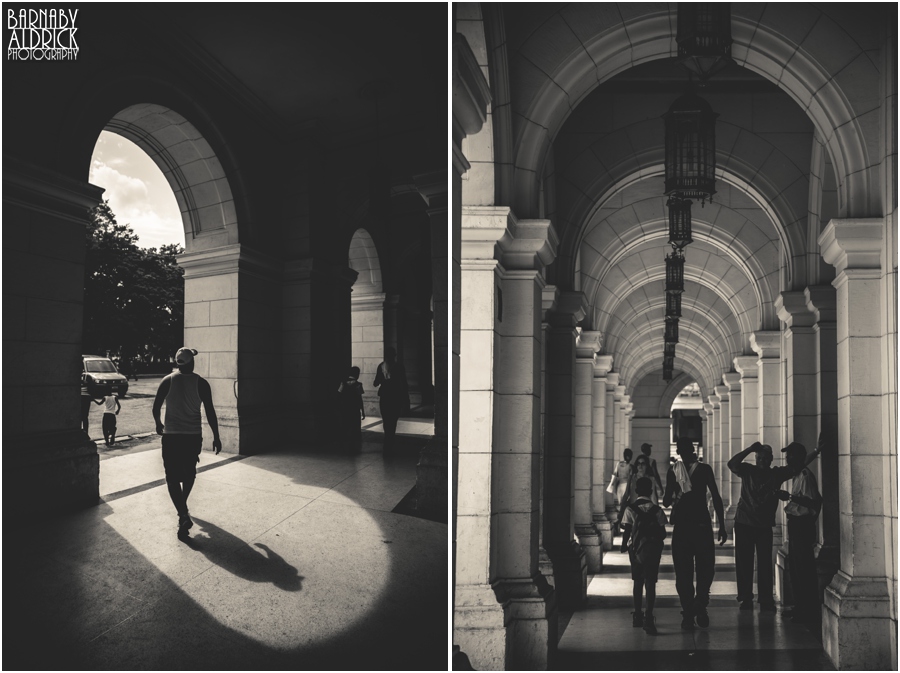
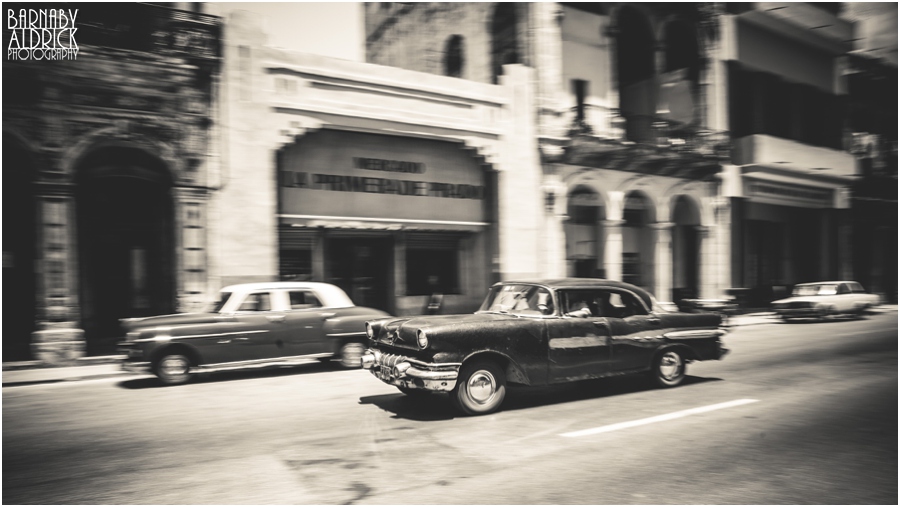
It’s tourist law to try and take a panning shot of an old car in Havana
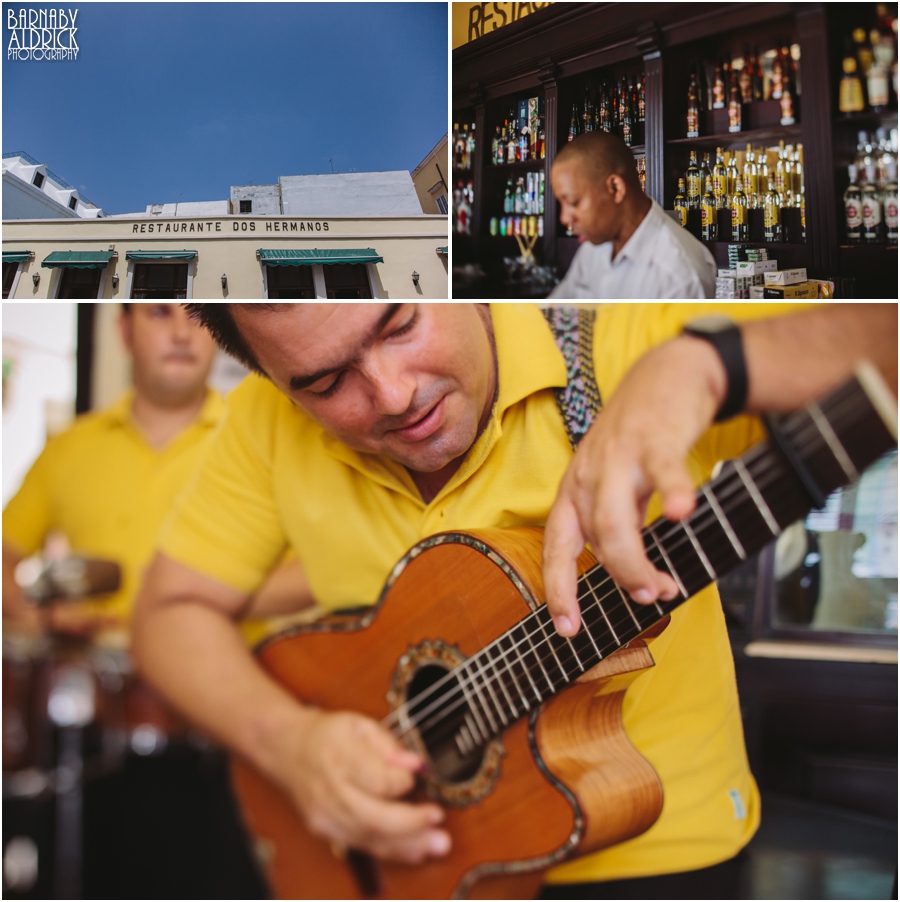
One day we took a horse & cart tour of the city and our 25-year-old guide, speaking fluent English, took us to a bar serving the best Mojito’s in town. With a brilliant band laying out the usual tourist-baiting Buena Vista classics, we caught up and had a brilliantly candid conversation about how he feels to be a Cuban, what kind of music he’s into, what he and his pals think’s coming next for Cuba. Essentially, he said they don’t listen to 1940’s music any more (it’s all ‘Reggaeton’ & such now) and while naive to the realities to the complexities inherent in Western capitalist culture, are ready for change.
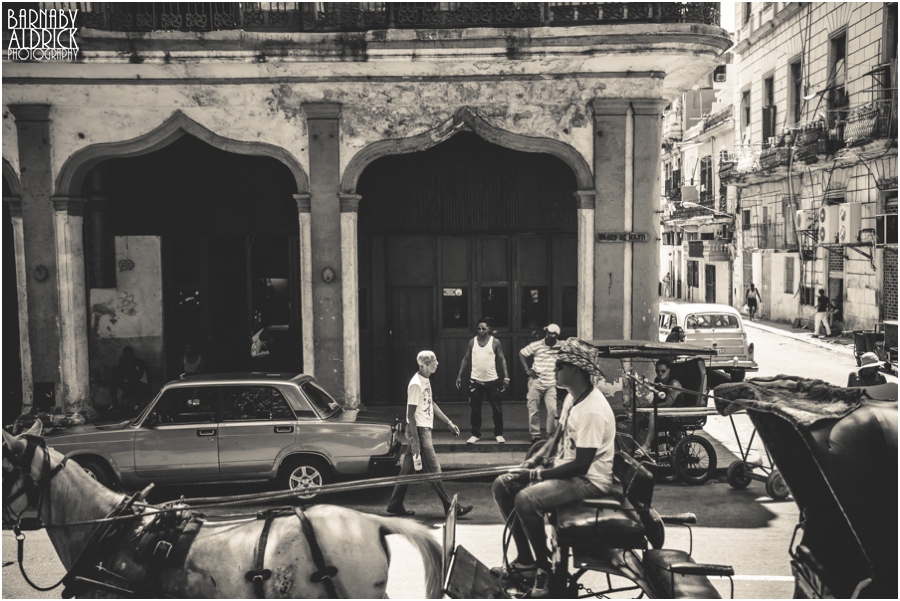
Cuba’s had a troubled history, and after watching Fidel explain it to Oliver Stone in Commandante, it seems they’ve just had one bad event after the next. I remember studying sociology at 6th form, and one thing I remember was that ‘Socialism can be good in theory but is generally bad in practice’. The way I see it, the revolution outed corruption and made all equal; removing unemployment and inequality. The opening up of education and healthcare led to a literate population; the knock on of which was smaller families, less crime and lower prostitution. All good so far. But then came troubles, America didn’t like a) being kicked out and b) having a Commie neighbour so shut them out, cutting off trade with an island reliant on selling them their sugar, rum and coffee. So Cuba turned to their political allies, the Soviet Union, who would trade with Cuba and buy their sugar if they could pop a strategic missile base there. Then the war got cold. (NB: my take on the actual history is sketchy, to say the least). After the cold war, while the USA made every attempt to destabilise Cuban, the Soviet Union dissolved, leaving Cuba with no-one to trade with. Fidel’s diplomatically called this ‘The Special Period in Time of Peace’ – essentially a 10 year economic crisis, with shortages in pretty much everything. This implosion of economic agreements between the petroleum-rich Soviet Union and Cuba radically transformed Cuban society and the economy, as it they were forced to introduce sustainable agriculture, decreased use of automobiles, and overhauled industry, health, and diet countrywide. People were forced to live without many goods they had become used to, and just like how the weather’s made us a sarc’y bunch here in England, it’s shaped the Cuban national character into a make-do and make-the-most-of-it kind of place.
Fascinating eh?
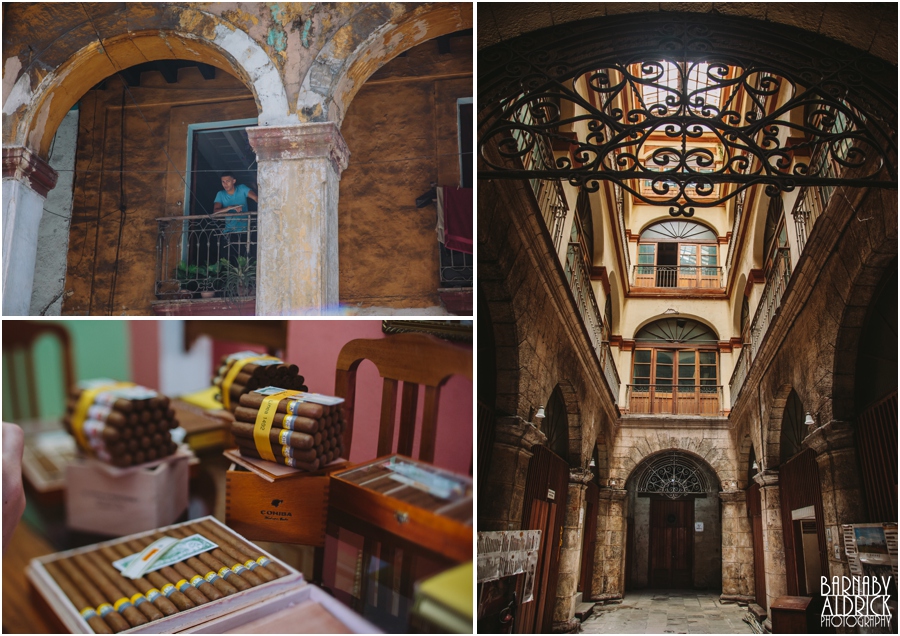
On the tourist trail, it would have been rude not to choke down a few cigars! Sadly all the factories we visited (like the one above) weren’t full of rollers rolling while someone read them the paper, and were generally closed for refurbishment.
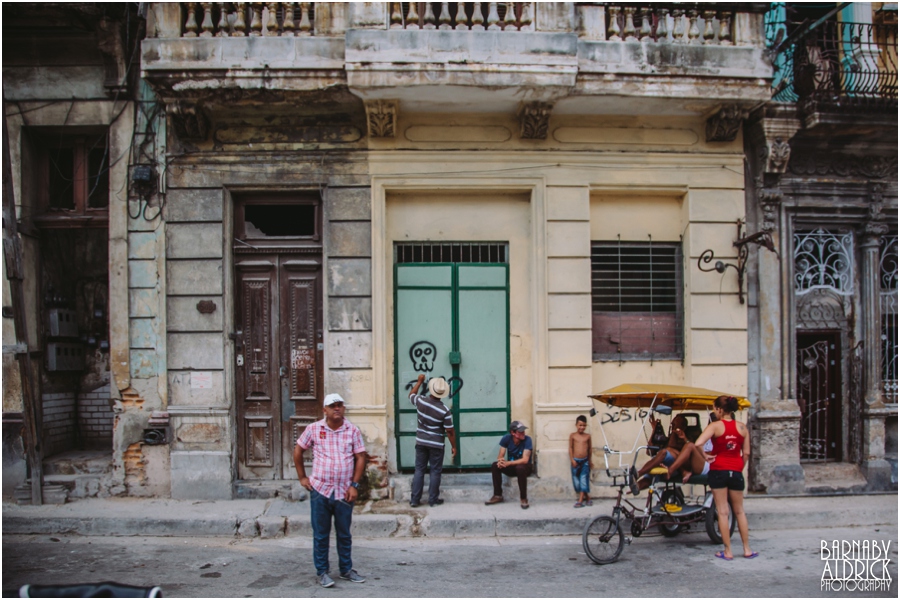
Only in recent years, with an absent Fidel, and a time of softening socialism run by his brother Raul, has Cuba opened it’s gates to tourism, and the expensive Convertible Pesos are pouring in to restore the buildings of old town, while everywhere else rots
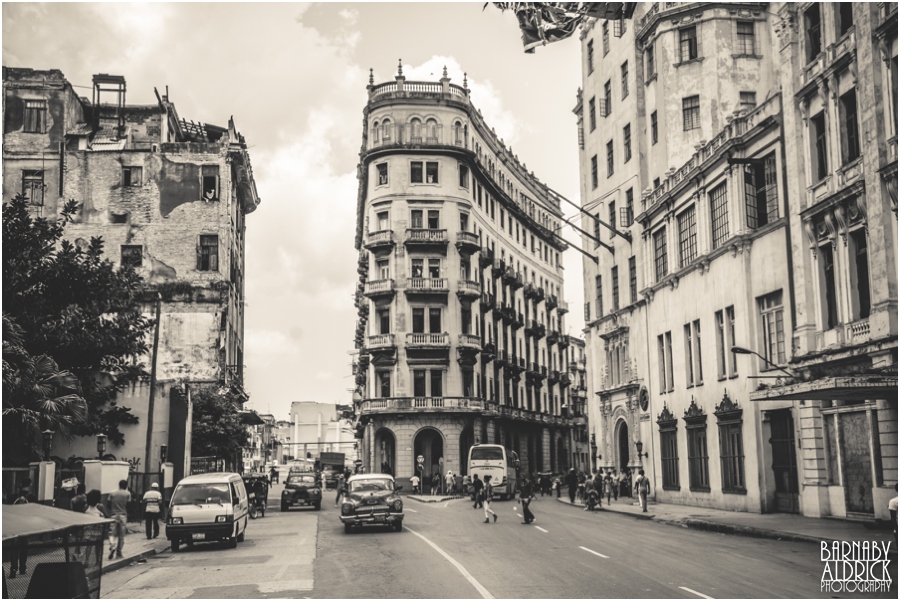
We found it quite odd that Cuban architecture had generally taken buildings and architecture from around the world and had copied it for itself. This building is a stumpier replica of the flat iron building in New York, but we also saw a complete replica of Barcelona’s La Ramblas, and the Capitol Building replicates the White House.
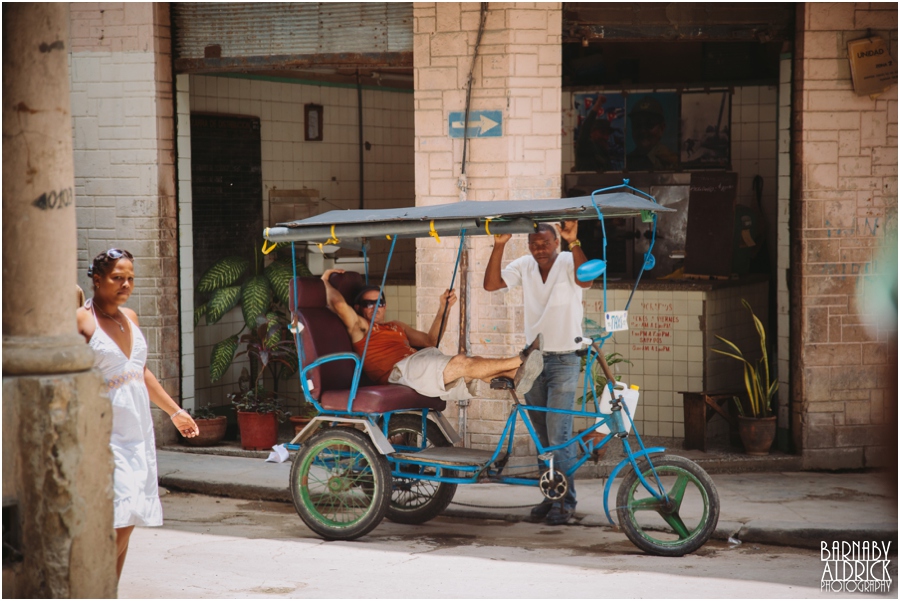
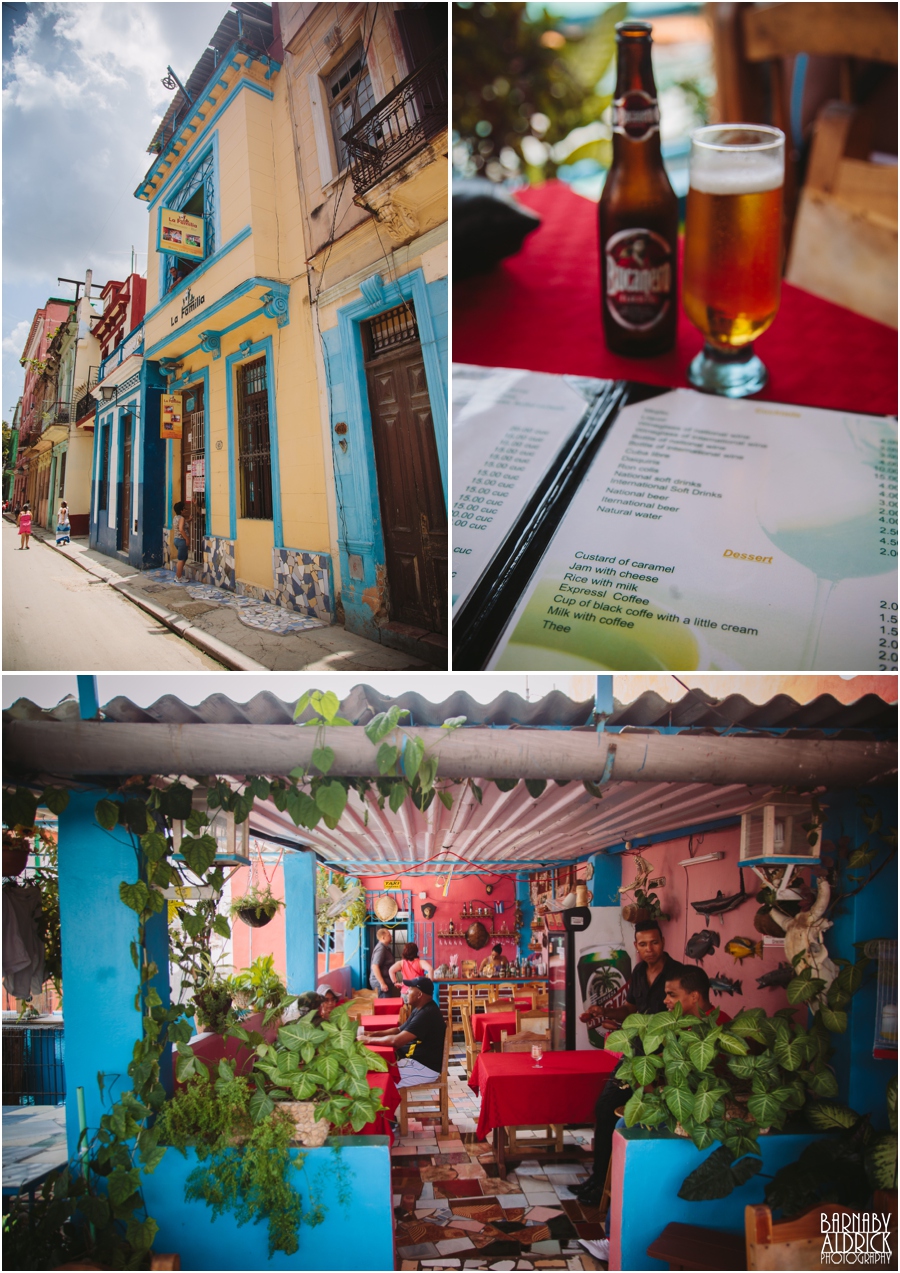
Remember to save room for ‘Jam with Cheese’ for desert!
We were warned that Cuban cuisine isn’t anything to get excited about. Almost exclusively it wasn’t. Usually it was a heavy and spiceless mix of meat stews or grilled meat, served with oily plantain, rice and sometimes grey potatoes (grey is my new favourite food colour). Clare & I love food, and generally like to plan our holidays in countries with a proud heritage in food, but all-in-all Cuba provided a gastronomically mundane experience. However, considering it’s using only what limited ingredients it can grow, and cast against the tapestry of history, culture and magic going on in every street, it’s worth the sacrifice.
However, there were generally three ways to try the cuisine: 1. in a state-run canteen restaurant for tourists, consistently mediocre and limited in imagination, 2. in hotels or the fancier restaurants (which in our experience were often equally unimaginative, and all the more disappointing by being overpriced) or 3. in Cuba’s “paladars”. Essentially, these eateries are set up by enterprising locals who’ve been given governmental permission (since 1994) to cater for the increasing numbers of tourists in their houses. This process helped keep the economy ticking over and are also known as “Casa Particulares”. They’re officially restricted to 12 seats, cannot advertise their presence too overtly and in theory are limited to serving pork, chicken and sometimes fish to prevent too much competition with the few state-run restaurants.
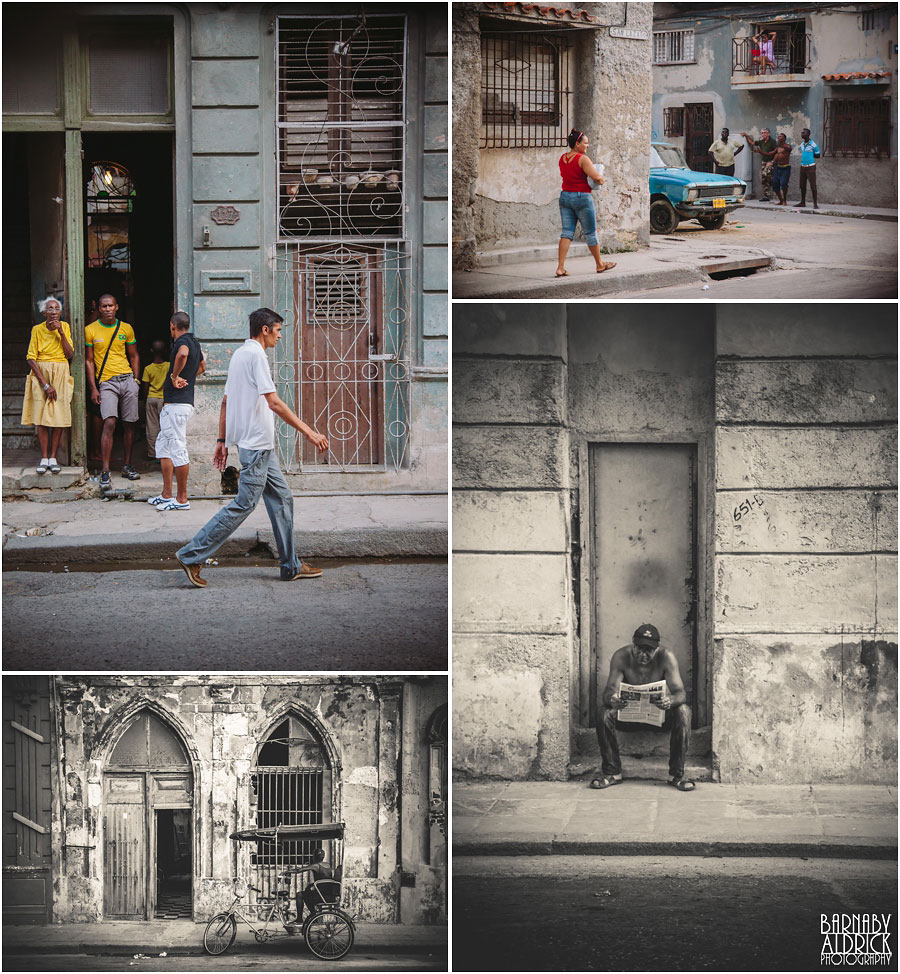
Most of the paladars we tried we ended up being in someone’s front room or on their roof, but we also visited probably the most famous paladar in Havana, La Guardia (where they filmed a famous Cuban film called ‘Ciocolat y Fresa’ Chocolate and Strawberry). It is difficult to find, but a fun ride on a rickshaw out into an altogether more authentic havana (as seen above)…
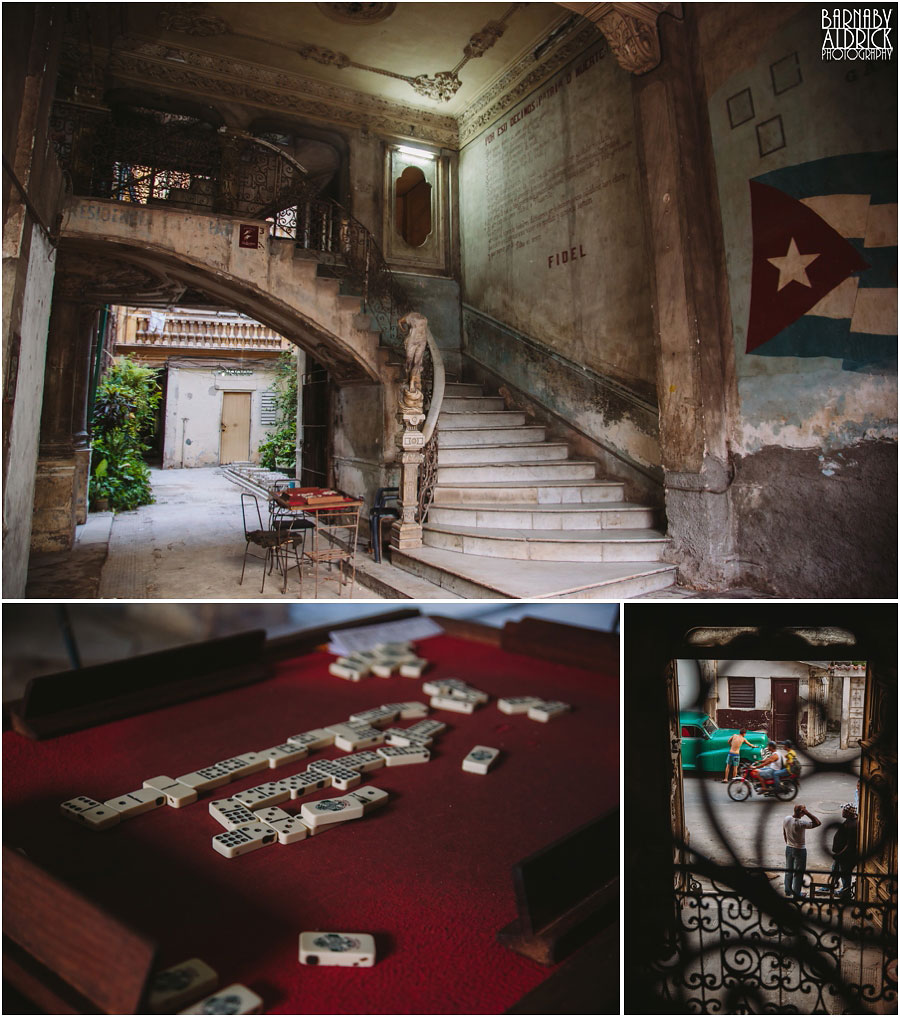
then you have to meander through a once-grand apartment block, passed a recently vacated domino table…
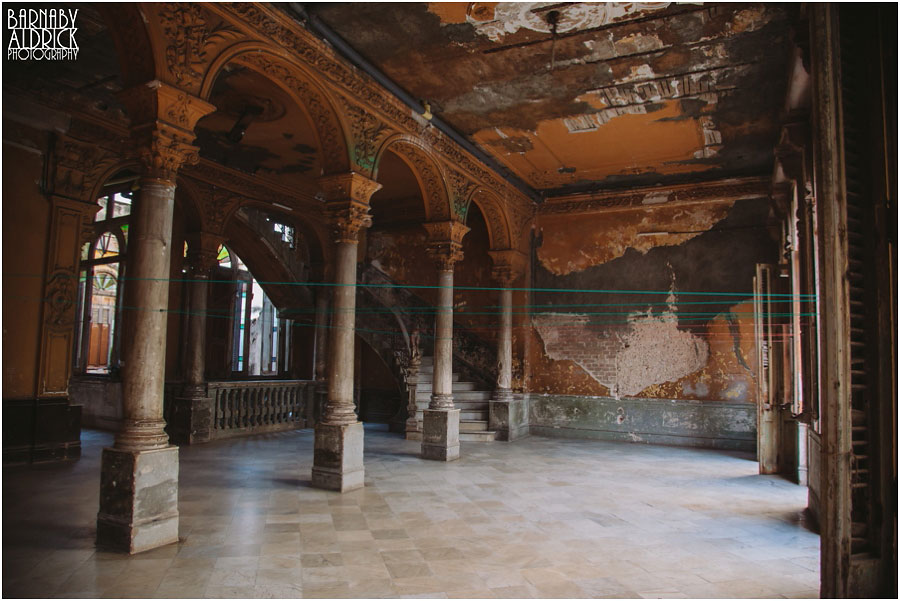
…and up through a charmingly dilapidated space to find a larger than usual restaurant, where we enjoyed our most interesting meal of the trip in a room full of faded photographs of international celebrities who’d also eaten there.
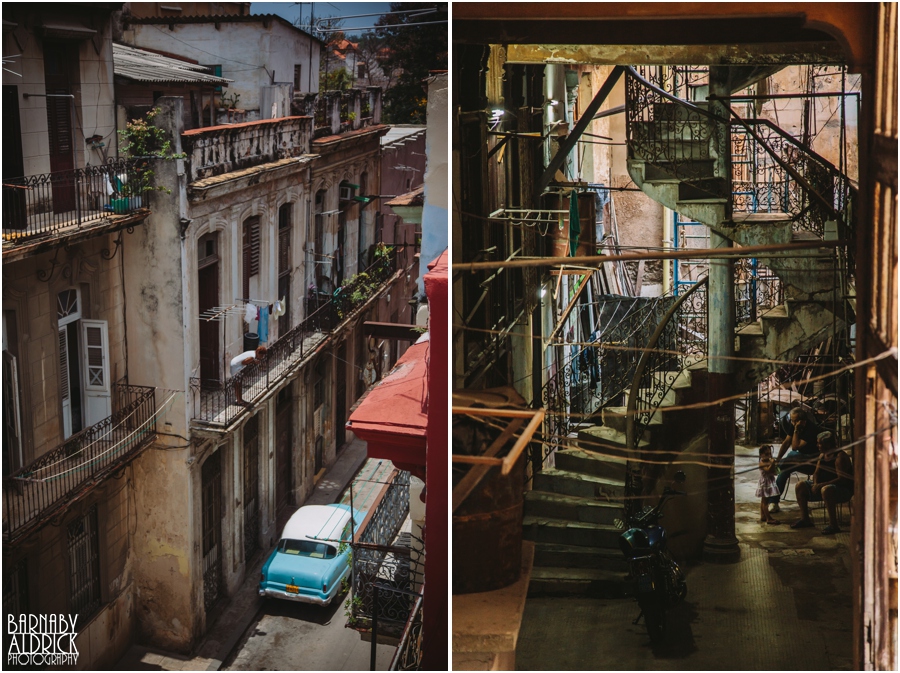
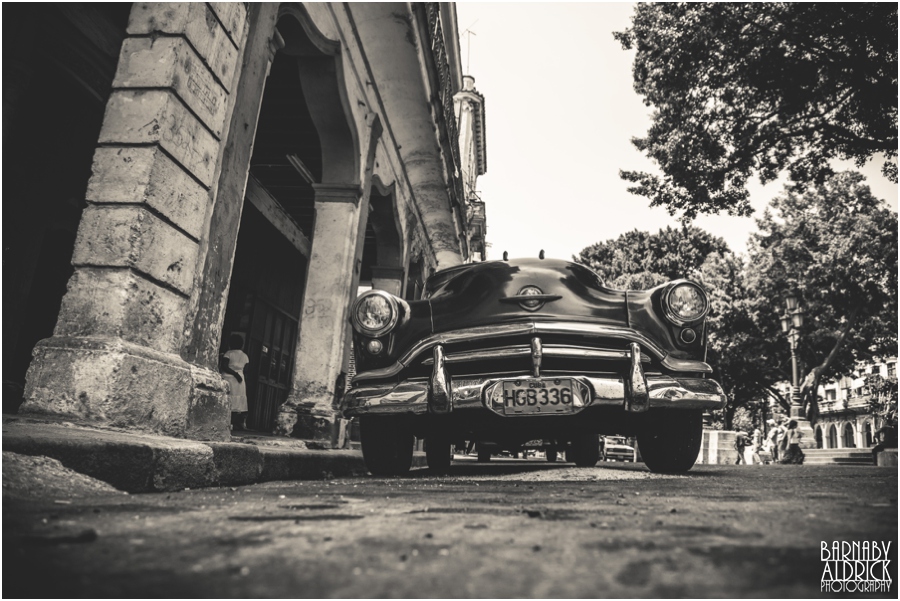
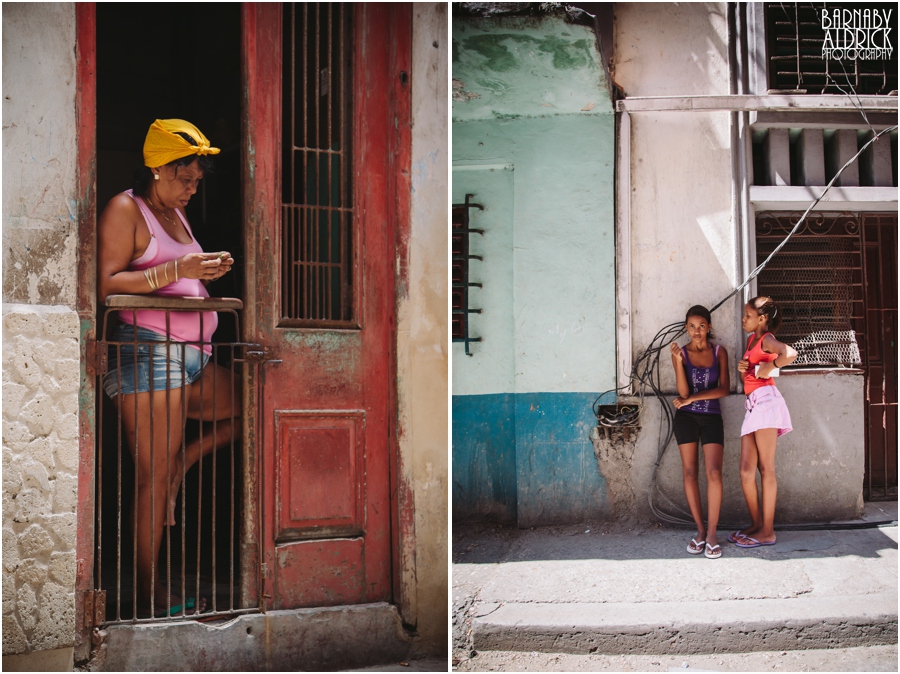

I love seeing shoes tied together and hung over washing lines.
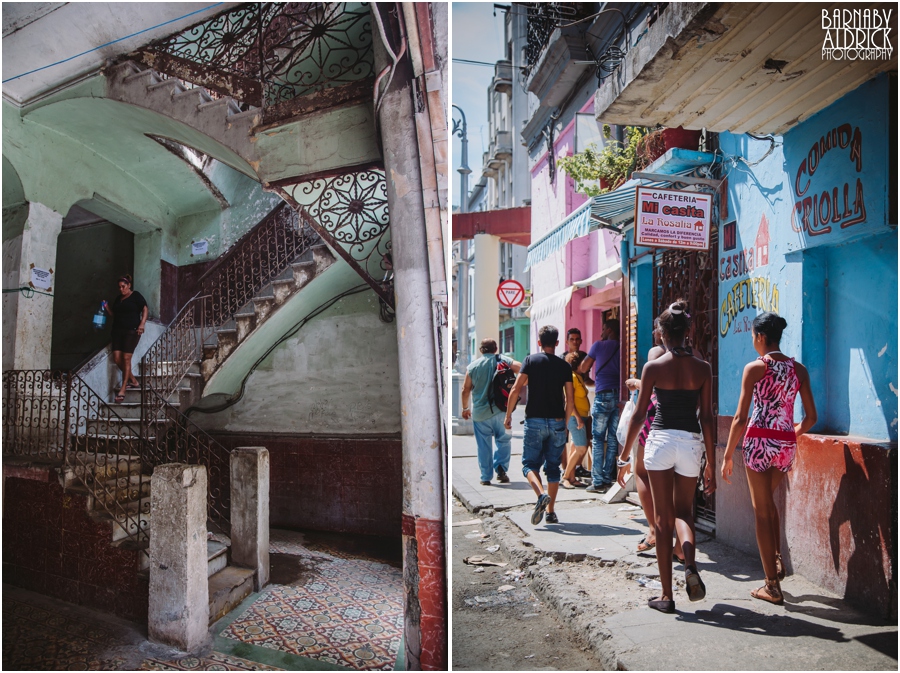
More crumbling and colours
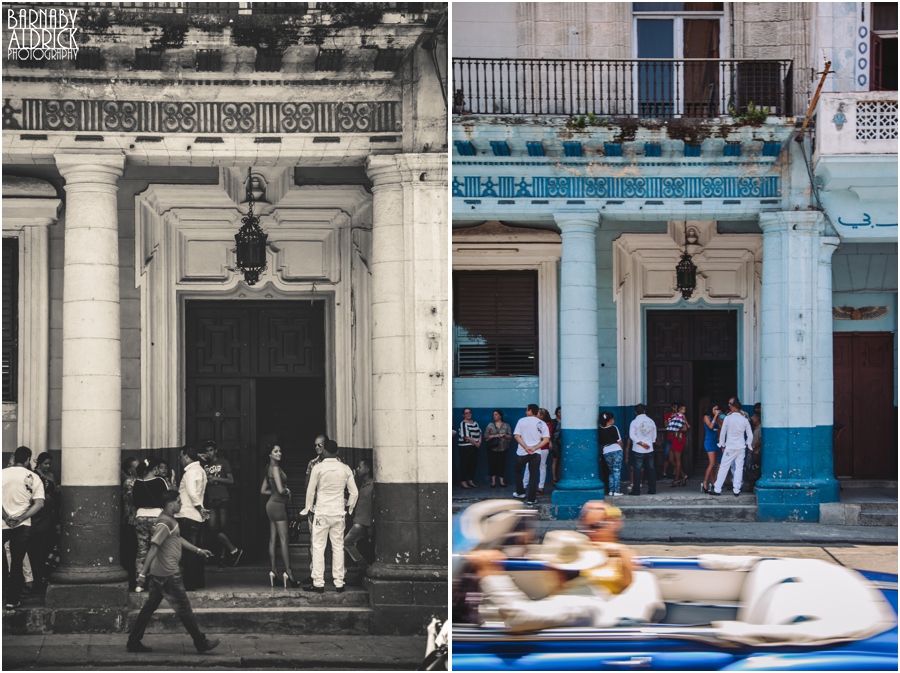
One thing we noticed in Havana was that despite it being vast and edgy, we never felt unsafe. There were generally police around, but even wandering the backstreets, never did we feel at threat.
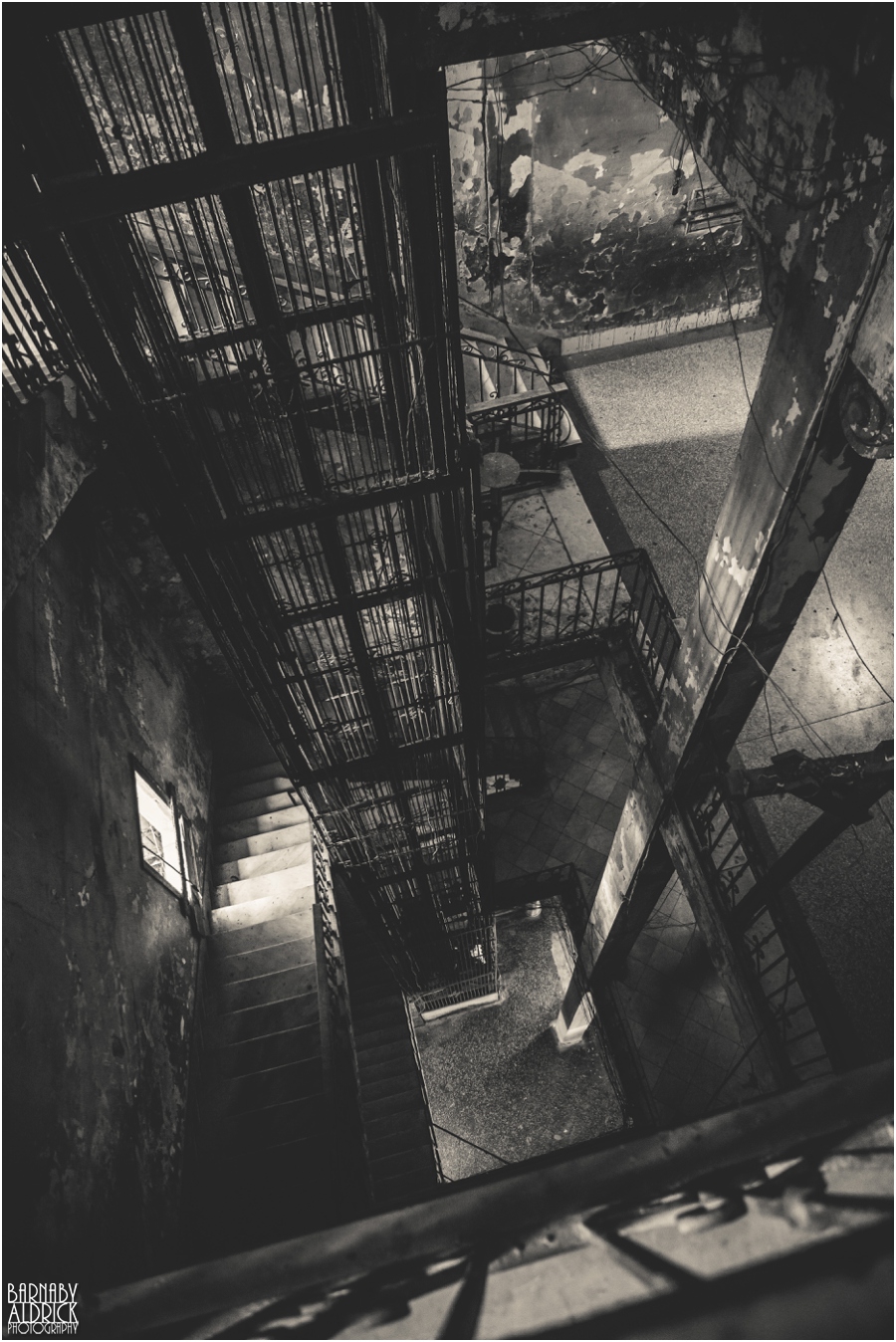
We wandered up a few creaky flights into this central apartment block (the lift didn’t look like it had been in action for decades). It reminded me of scenes I’d seen doing Urban Exploration in derelict buildings after the ravages of time, but here people still.
Could you imagine photographing weddings here?! It would rule.
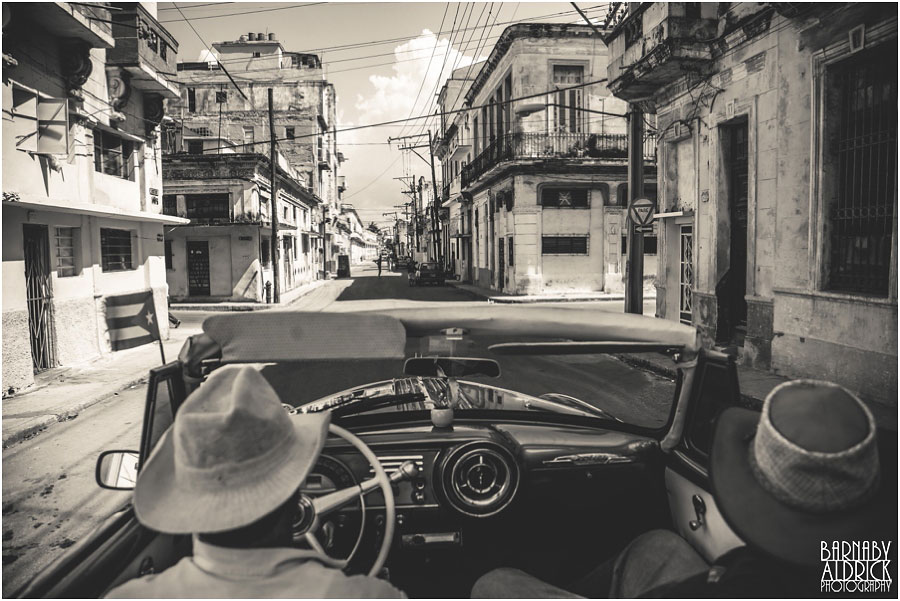
Another day we bit the bullet and took a mint condition Pontiac convertible for a guided tour of new town
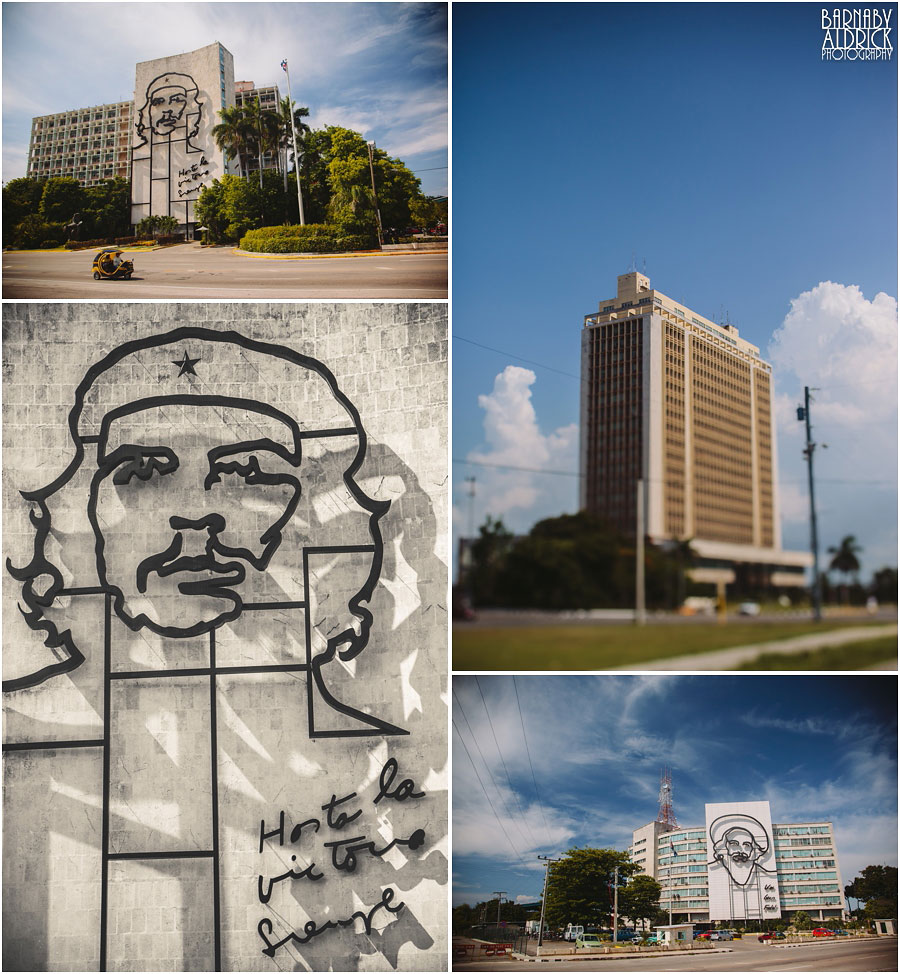
We visited the famous Plaza de la Revolución, featuring the giant metalwork faces of revolutionary posterboys Che & Cienfuegos (no it’s not Bin Laden)
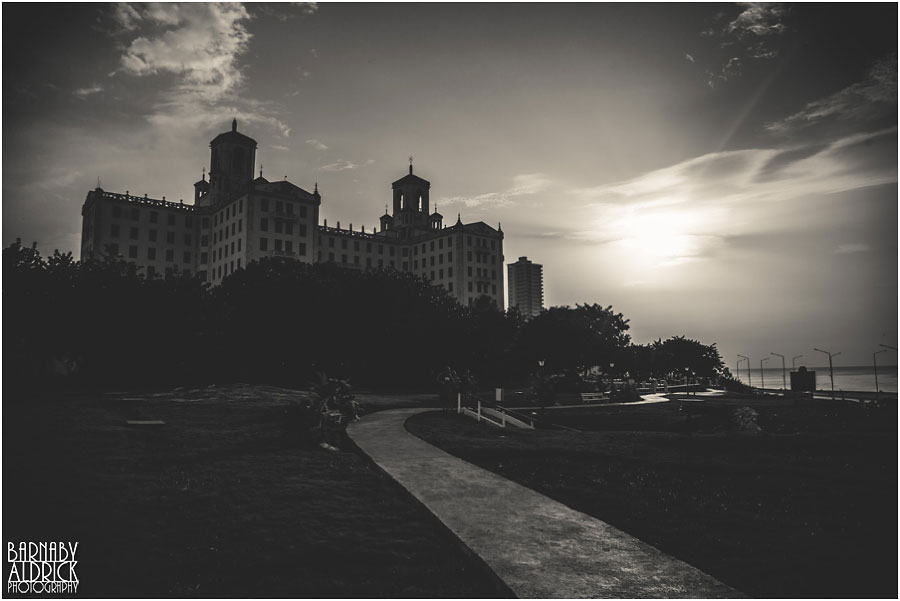
We passed & stopped into the landmark Hotel Nacional De Cuba, once a den of iniquity for the honchos of the US Mafia.
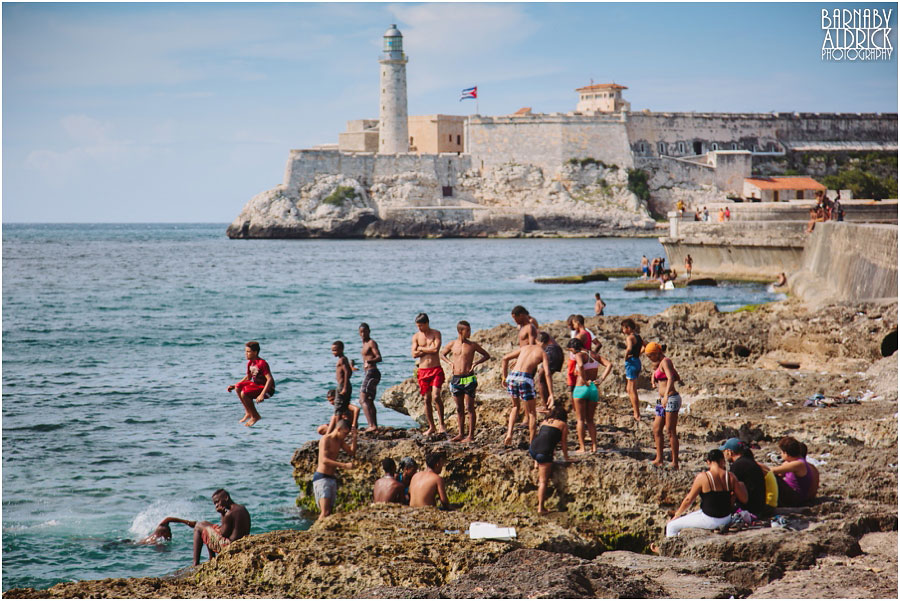
Afterwards we wandered down The Malecón, and saw local kids enjoying the sea in front of the sea wall (with the imposing El Morro Fortress in the distance)
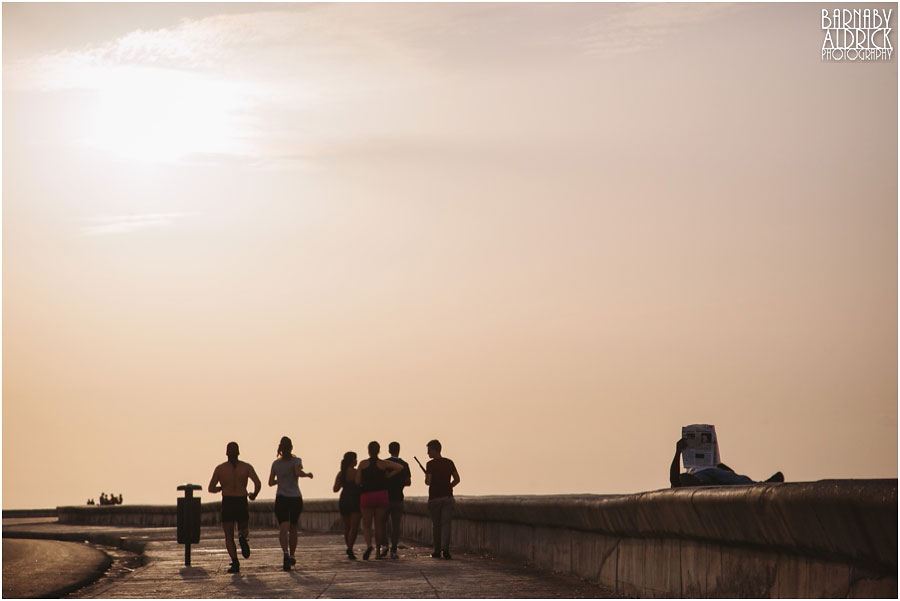
It’s a magical place to stoll at sunset…
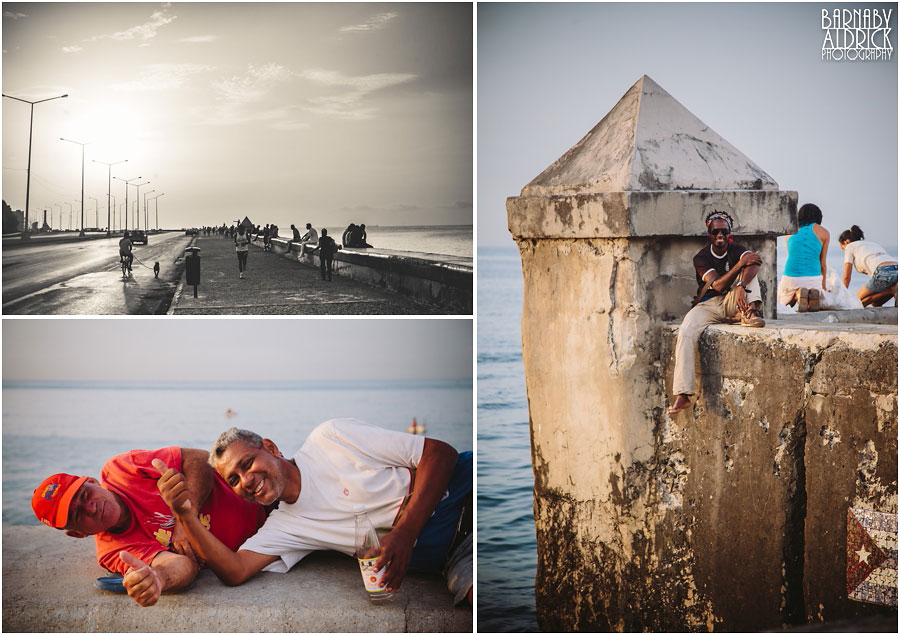
…bursting with locals enjoying their rum…
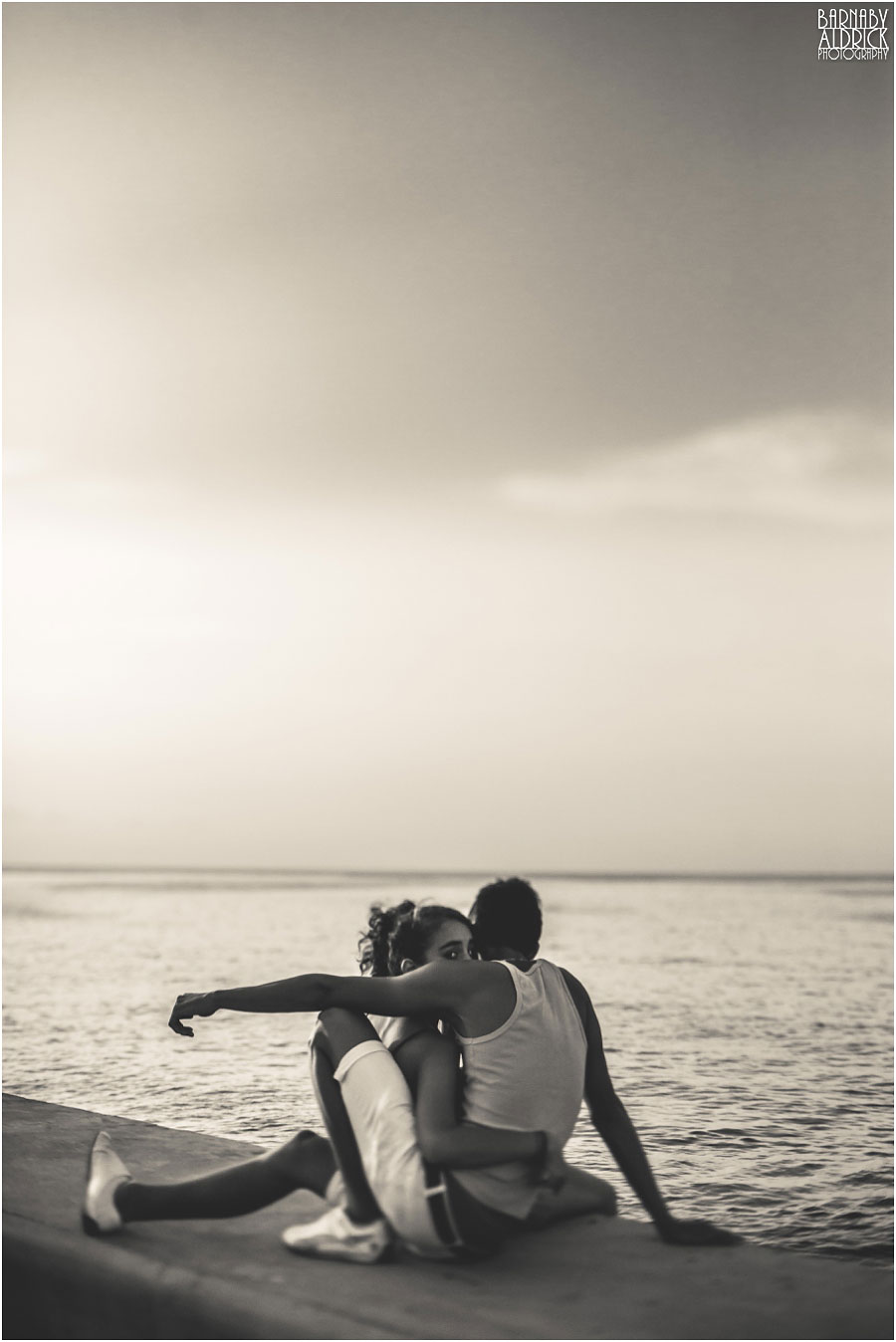
…or getting amorous
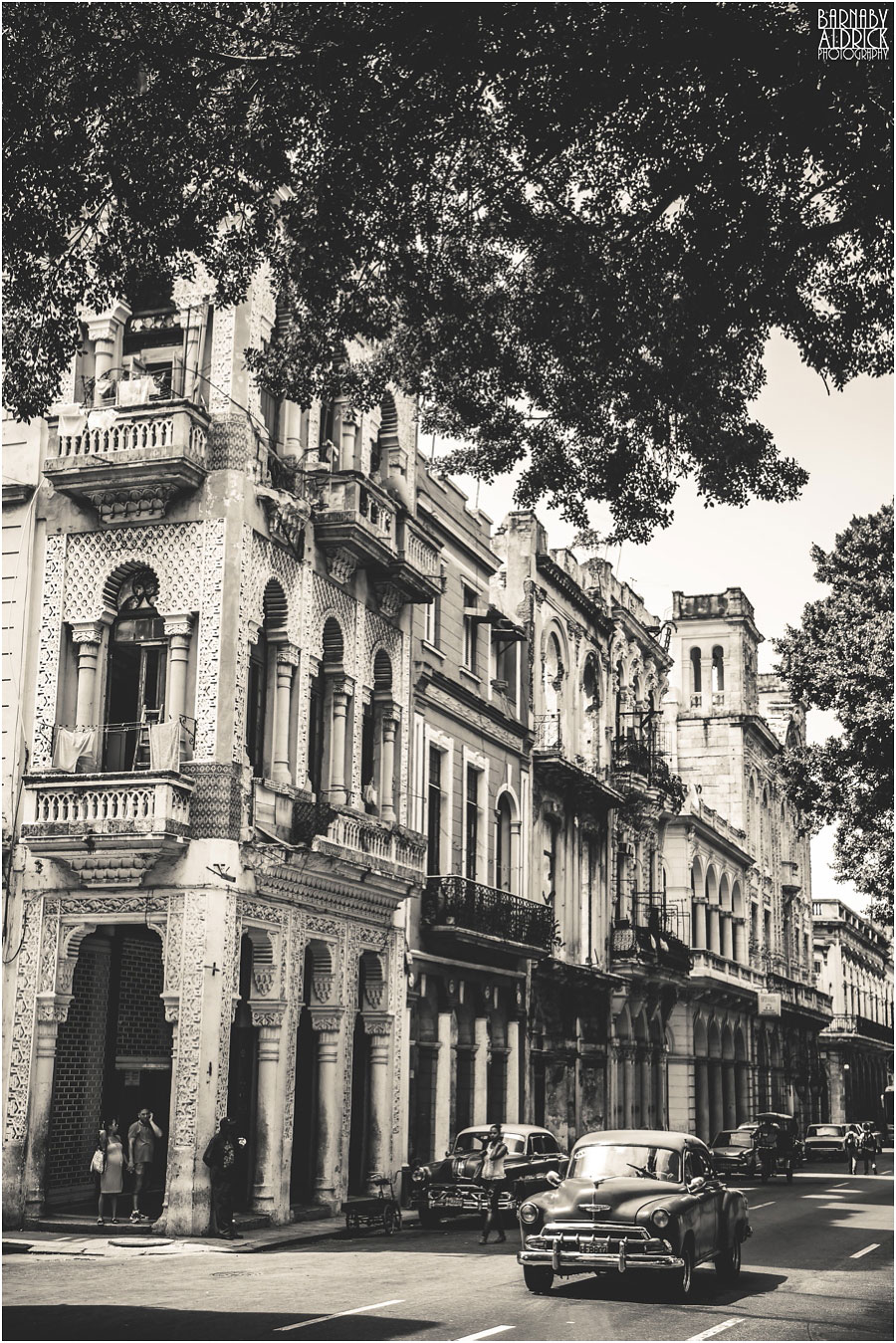
Our adventures in Havana book-ended a trip to the paradise island of Cayo Coco, but I’ve clearly posted too many images in this blog already, so I’ll spare those for another time…
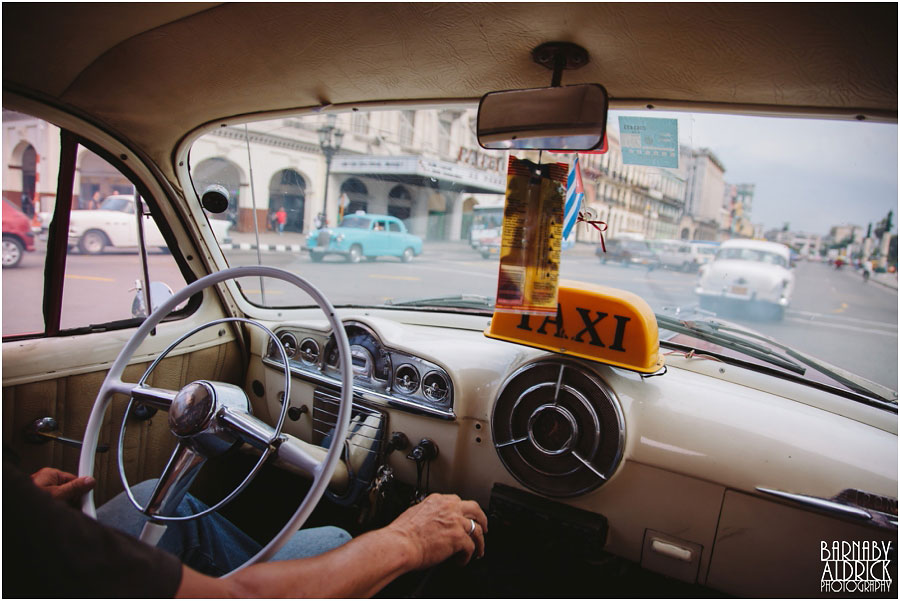
One thing we noticed on our way back to the airport in an amazing Yank Tank, as that, apart from occasional propaganda, there’s no advertising anywhere..
Used to a constant bombardment of billboards and adverts streamed across all media, it’s quite odd seeing none!
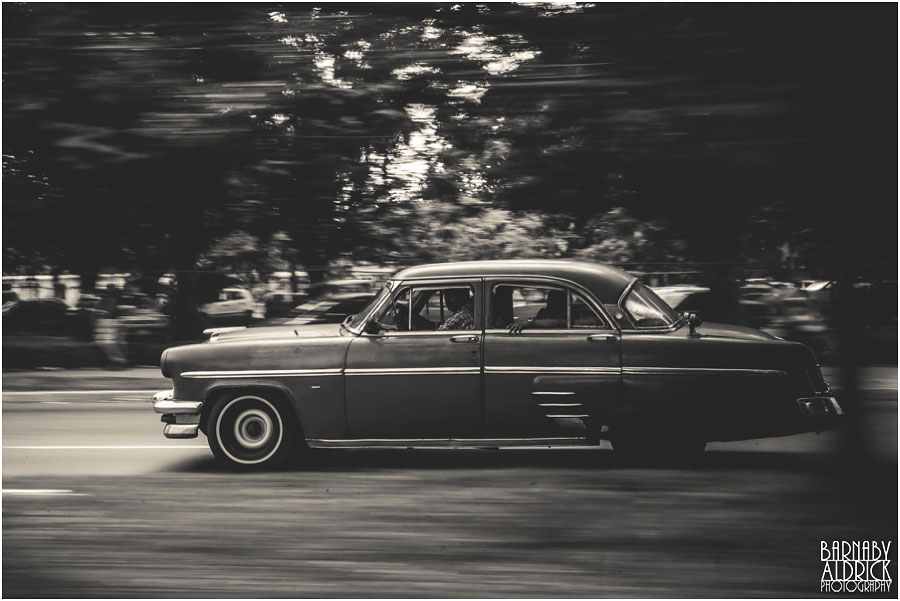
[Turns out panning shots also look cool from another moving vehicle…]
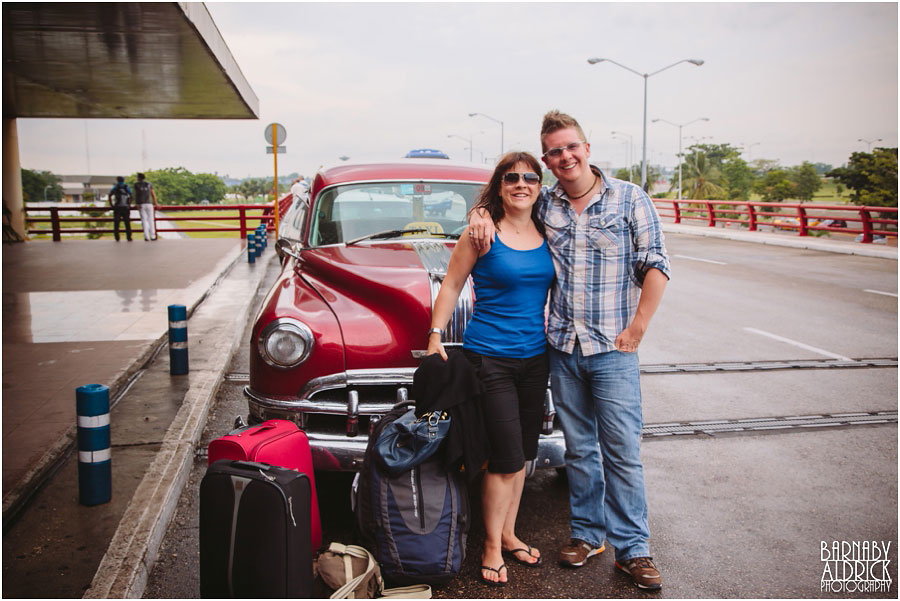
What an amazing experience! Cuba is clearly on the lip of change, and in spite of having wanted to come here for years, I think we timed our visit perfectly, in a time of softening Communism, yet before the walls are broken down and in flood CocaCola, McDonalds & homogenous hotel chains.
Try and swing by soon if you get chance…
Thanks for reading (and well done getting this far!)
Barns
